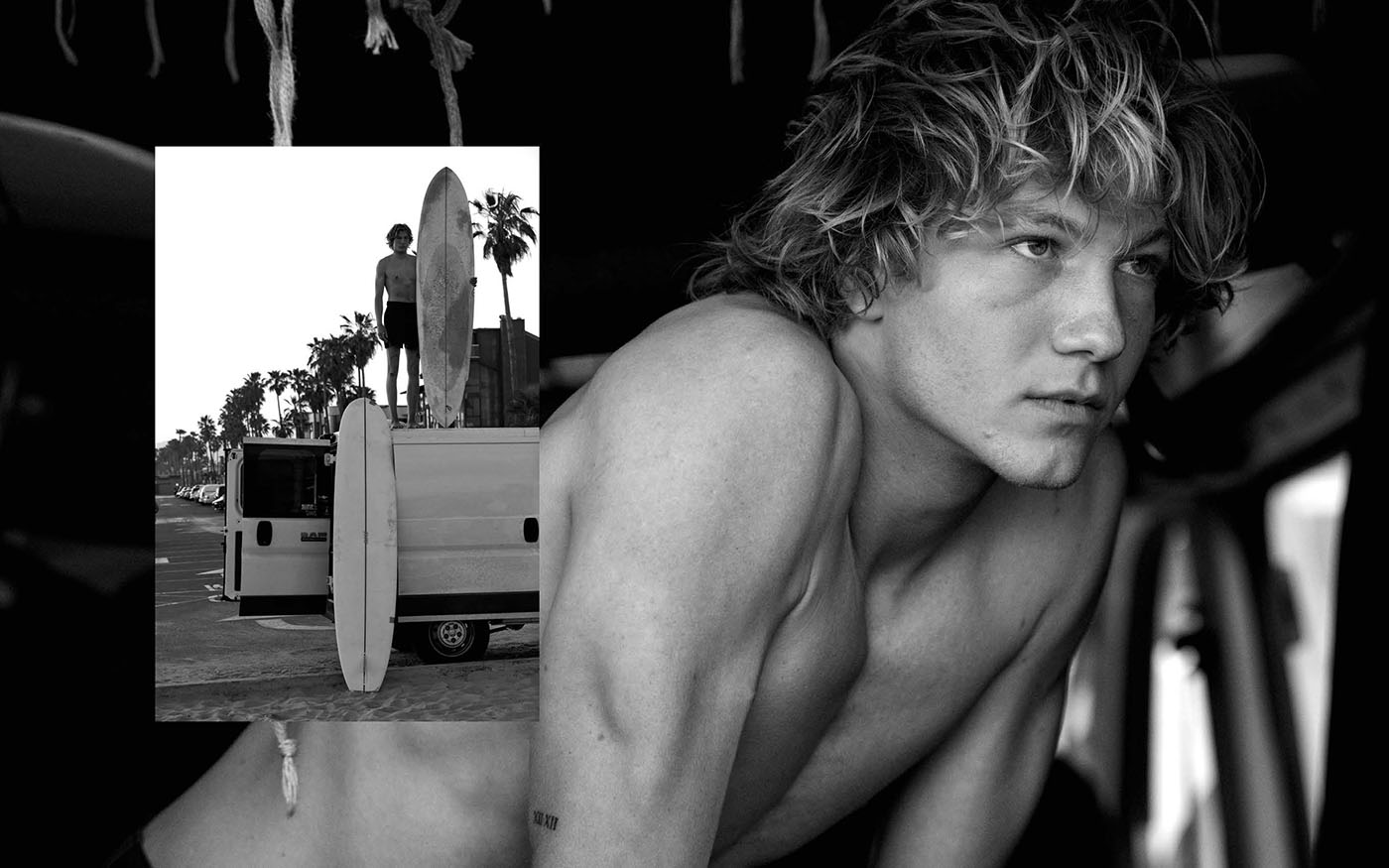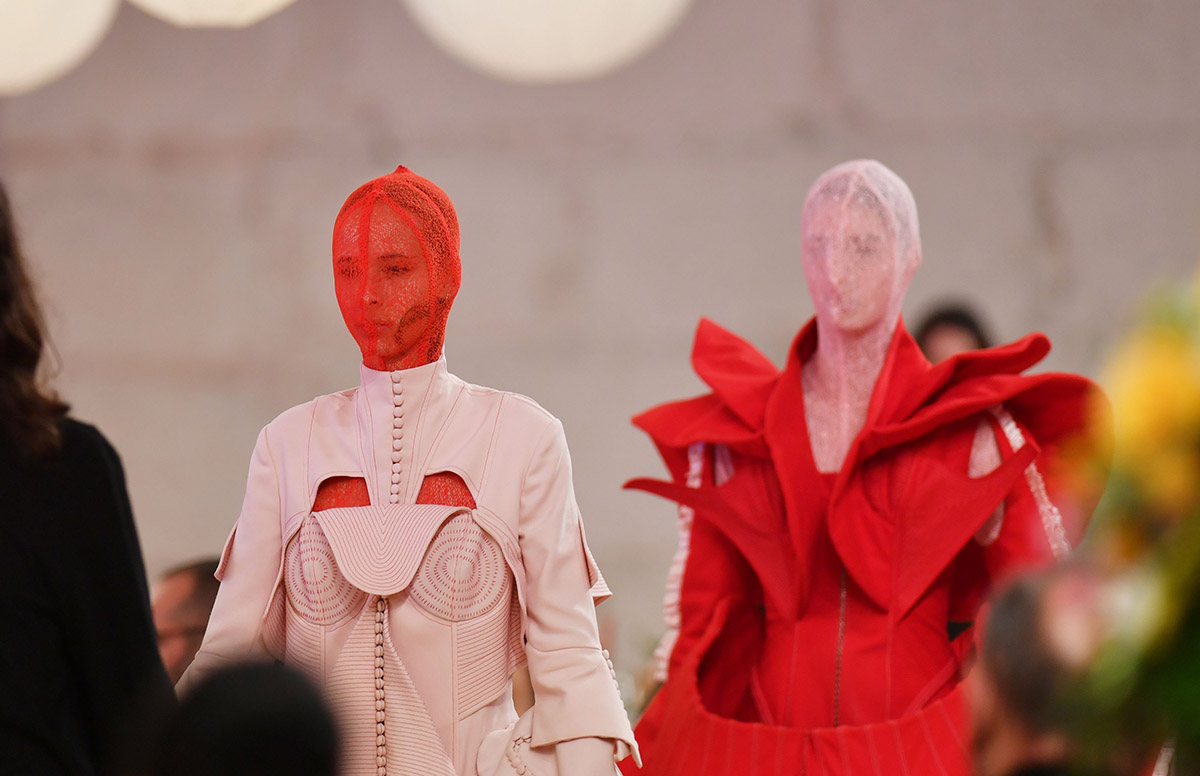Summer Spirit in St. Tropez
Summer Spirit in St. Tropez
The Plein Soleil capsule by Hedi Slimane for CELINE.

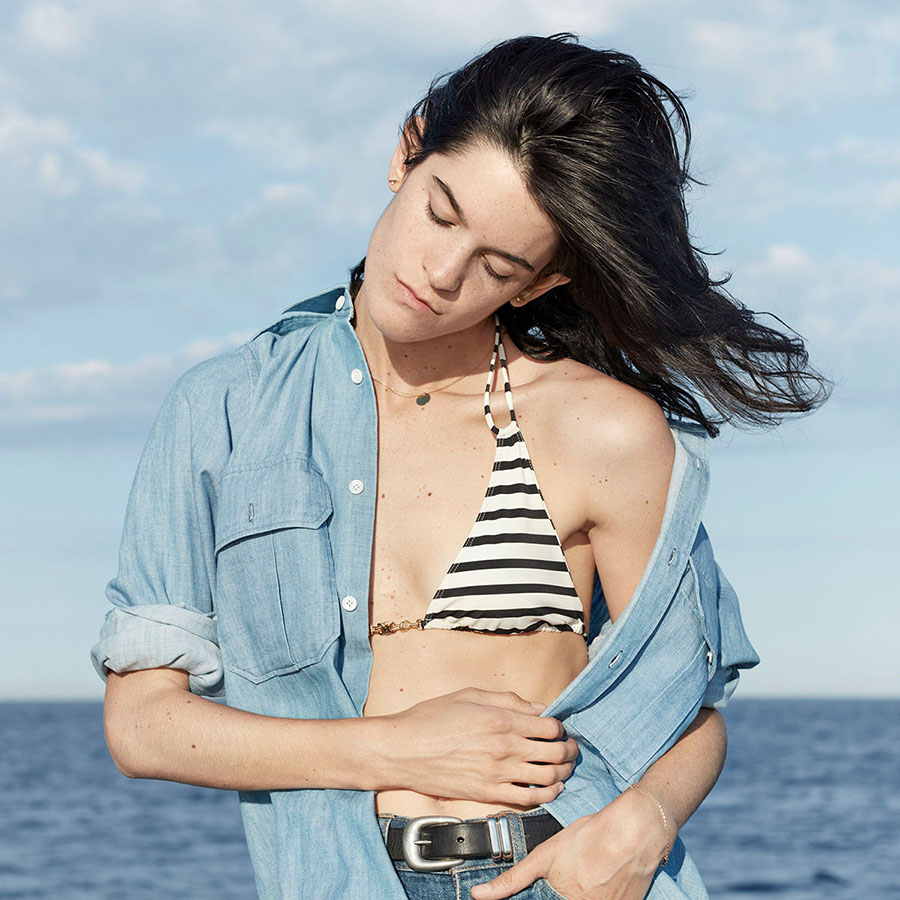
As the latest part of the Baie des Anges collection, the brand-new Plein Soleil capsule by CELINE blesses us with a glimmer of St. Tropez spirit for the summer months ahead. The assortment of ready-to-wear items and accessories will be available in selected CELINE stores from April 29th, 2022.
The collection channels the famed understated elegance that both CELINE and the South of France are known for. With pastel tones and floral patterns present throughout, the capsule transports us to a sun-kissed coastline, with striped beach towels and swimwear as accompaniments. The beach-chic feel of the collection is complemented with a craftwork twist, as handknitted crochet dresses and tops are included. To top off the seaside experience, the capsule offers special CELINE editions of the beloved beach games Pétanque and Finnish Keels and even includes a hammock.
As the sun sets over the Mediterranean, the CELINE woman slips out of her beachwear and into a luxurious evening collection. Crafted with the fine materials of jacquard and lamé printed silk, the capsule offers a Bain de Soleil dress, a lingerie top and more for those unforgettable St. Tropez summer nights.
The silhouette also enjoys a plethora of bags, including the house’s classic Panier in various colourways, as well as the Cabas Thais and a calfskin picnic basket. Canvas sneakers, gladiator sandals and acetate sunglasses complete the collection. Modelled by CELINE brand ambassador Suzanne Lindon, the Plein Soleil capsule is the latest in a long line of successes, crafted with the personal touch of Hedi Slimane, the brand’s enigmatic creative director. Available in selected stores from April 29th, CELINE offers you a chance to dress à la mode with this quintessentially French collection – allons à la plage!



Text: Harvey Byworth-Morgan
Paradise in Technicolour
Paradise in Technicolour
The resort capsule by NENSI DOJAKA for Mytheresa.
Nensi Dojaka, winner of the prestigious LVMH Prize, has collaborated with the leading luxury online retailer Mytheresa for an exclusive Resort capsule collection, which will be available globally on April 20th, 2022.
Since completing the Central Saint Martin’s MA course in 2019, Dojaka has been widely regarded as one of the hottest young talents in the fashion world. She has already crafted a distinctly unique aesthetic, incorporating asymmetry, lingerie-style, and intentionally visible seams and straps. This trademark look of sophistication with a measure of tasteful eroticism has been reimagined for the Mytheresa collection: whilst retaining the beautiful craftwork that has made Dojaka an international star, the Resort collection has introduced a splash of colour into the mix. With shades of orange, turquoise and pink entering the fray, the collection has a distinctly summery feel. This tropical spirit can be seen too in the inclusion of figure-hugging party dresses 90s cut-outs, wrap skirts and swimsuits among the collection’s 60 ready-to-wear pieces. As always with Dojaka’s work, the beauty in the collection is its effortless harmony between truly innovative designs and genuine wearability.


This venture marks the next exciting step in Albanian-born Dojaka’s remarkable ascendancy; having produced three collections with the Fashion East collective, she was invited to be NEWGEN recipient by the British Fashion Council for her Fall 2022 collection, which received glowing reviews. Now this latest collaboration enables Dojaka to partner herself with one of the world’s most prestigious luxury e-commerce platforms.
As well as garnering acclaim from several of the fashion’s most revered institutions, Dojaka’s collections have also won the affection of various global stars, with Camille Charriere and Jourdan Dunn recently donning her designs, and Zendaya even having her own bespoke dress made. The launch of the collaborative release will come within a dedicated editorial story directed by Julian Paul, Chief Creative Officer of Mytheresa, shot by Jana Geberding. Available globally on April 20th.




Text: Harvey Byworth-Morgan
BULGARI Serpenti Through the Eyes of CASABLANCA
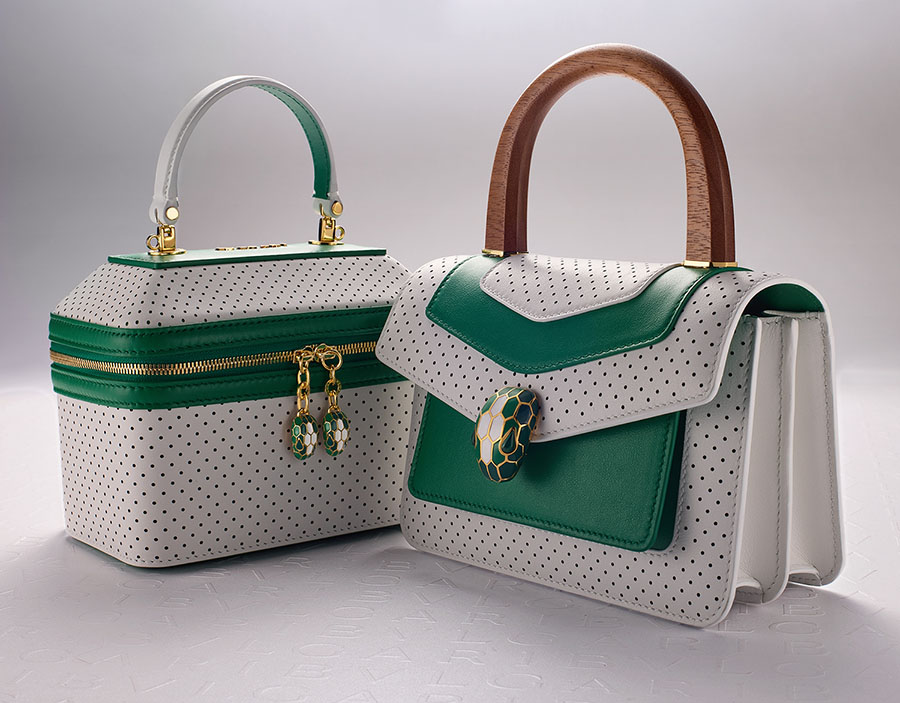
Imagine a fine combination of comfort leisurewear and luxury craftsmanship. The idea sounds contradictive, but Bulgari made it happen together with the burgeoning French fashion house Casablanca, under their latest project “Serpenti Through the Eyes of Casablanca”.
As a top-notch luxury brand, Bulgari has always been active on contributing to societal goals by nurturing the youth. The financial aids to the restoration of Spanish Steps and the ongoing restoration project in Area Sacra di Largo Argentina are just the tip of the iceberg. In 2017, Bulgari launched the “Serpenti Through the Eyes of ”, a project in collaboration with talented young designers on the reinterpretation of the fashion house’s iconic Serpenti collection. Through their daring vision, the collection is imbued with vibrant and sprightly energy. Previous collaboration include London-based “Queen of Print” Mary Katrantzou and high-fashion streetwear label Ambush. This year, Bulgari invites us to see Serpenti through the eyes of Charaf Tajer – the creative director of Casablanca.
Bringing together its contemporary soul by mixing the essence of carefree and decadent après-sport style and luxurious touch into the Mediterranean aesthetics, Casablanca’s exclusive interpretation of Serpenti, Bulgari’s legendary icon, is all about playfulness and elegance. Divided into two different moods, the first part of the “Serpenti Through the Eyes of Casablanca” capsule collection is all about the après-sport chill. Inspired by the classic tennis look, Casablanca turns the bags into a white and green contrast. Finished with perforated leather and a gold-plated wooden handle, the design alludes to the equipment, venue, colors, details, outfits and elegant aesthetics of the universe of tennis.
Incorporating Bulgari’s Roman heritage with Casablanca’s Moroccan roots, the aesthetics from two opposite shores of the Mediterranean blends harmoniously in this collection, infusing a breath of fresh air hailing from the Mediterranean Sea to the fashion world.

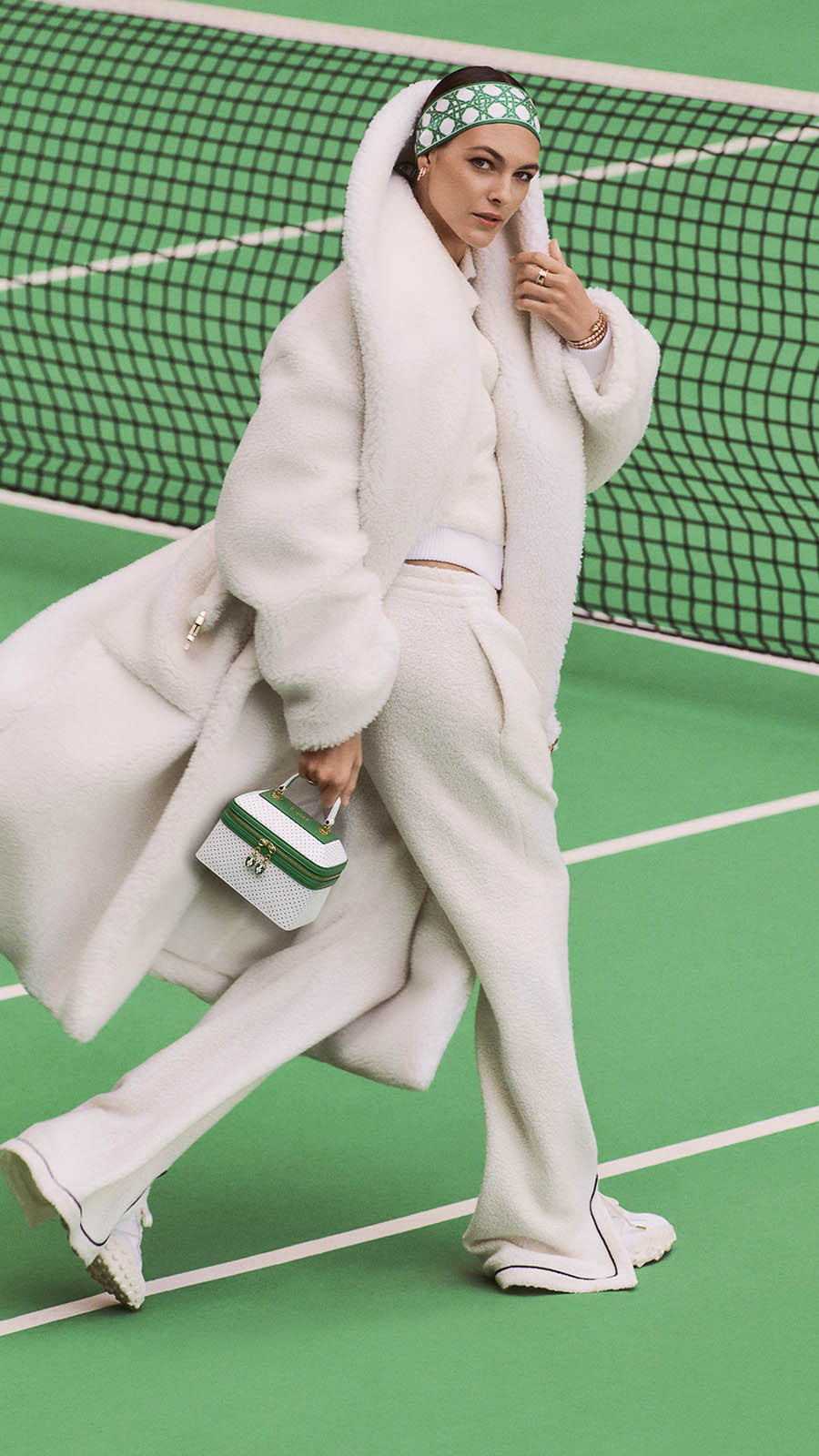

Text: Yves Tsou
Into the Wild
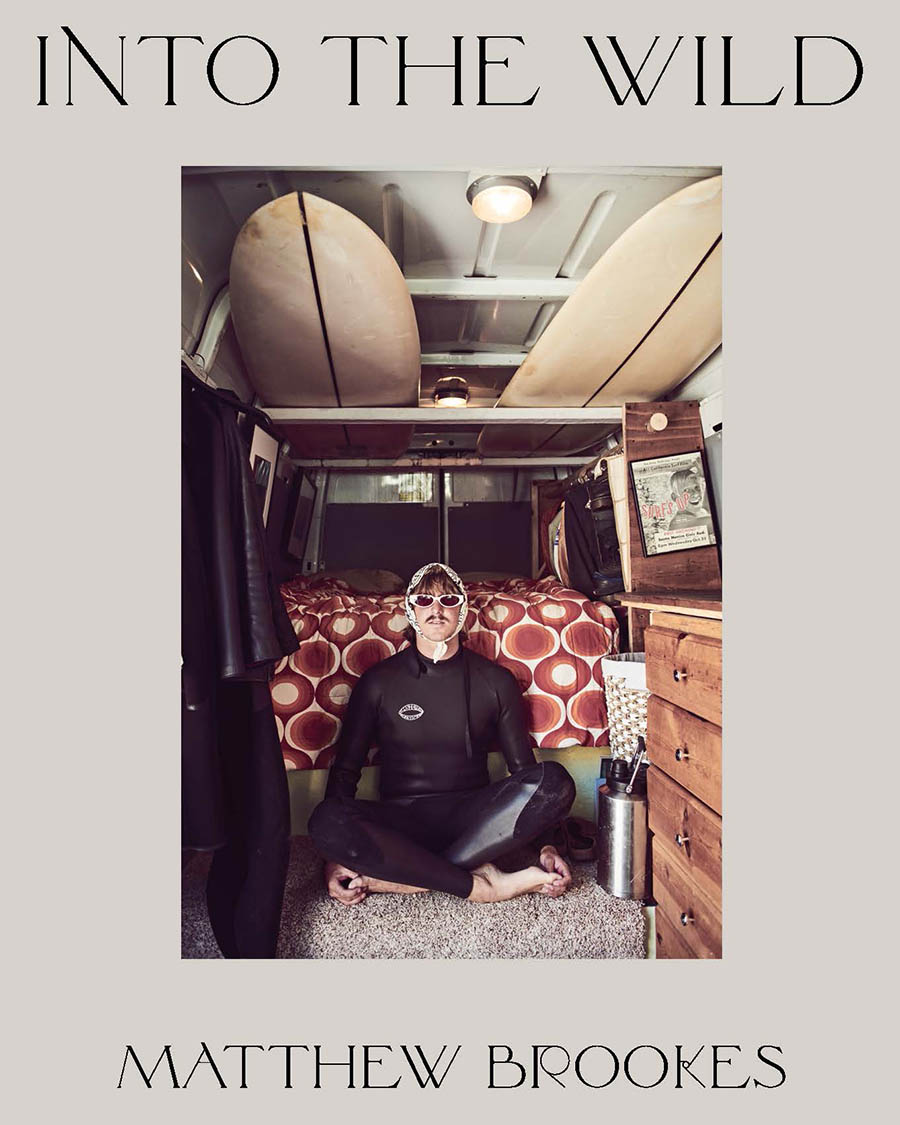



Standing on the shore, Matthew Brookes’ feet sink lightly in the sand as the tension in his body grows. Not of anxiety, but of excitement. He gazes at the sea to witness surfers conquer the raging waves of the water, their arms raised as they balance themselves on their surfboard. Brookes, not content to only be an observer, raises the camera in his hands, captures the splash of the water and the blast the surfers feel, and prints the images in his monograph Into The Wild.
For the project, Brookes uncovers the stories of the young surfers pursuing the van lifestyle, following their coast-to-coast affairs with their surfboards and the water. The resulting images punctuate the youthful zest of the surfers for travel, freedom, and dreams, always chasing the best waves while living out of vans. CAP 74024 talks to the New York and Paris-based photographer to discover his self-discovery throughout the project, his journey within a journey.
After reading the brief of the monograph, I wonder how present the surf life is in your life. Have you always wanted to capture this celebration?
I grew up in a surf town on the East Coast of South Africa called Durban, and most of the cool kids in my school were surfers, so I guess I had an introduction to surf culture at an early age.
When I moved to Venice Beach California I was introduced to a few surfers through common friends, and they were quite open to being photographed. Each surfer introduced me to more surfers and the project grew very fast!
So, I know that you followed a group of young surfers from Venice Beach on their adventures up and down the coast. What were you hoping to witness? Could you elaborate more on “adventures up and down the coast?”
What I discovered very quickly is that all the surfers I was shooting lived out of their vans. They were literally surf nomads traveling up and down the coast, following the best surf. This lifestyle was really fascinating to me, and I was drawn to their philosophy of life and sense of freedom.
I did not have any preconceived expectations when I started photographing the surfers – it was more about shooting everything as it happened, like a surf diary. What surprised me about the surfers I was shooting was how quickly they opened up their world to me and how generous they were with their time. They made me feel very accepted and welcome.
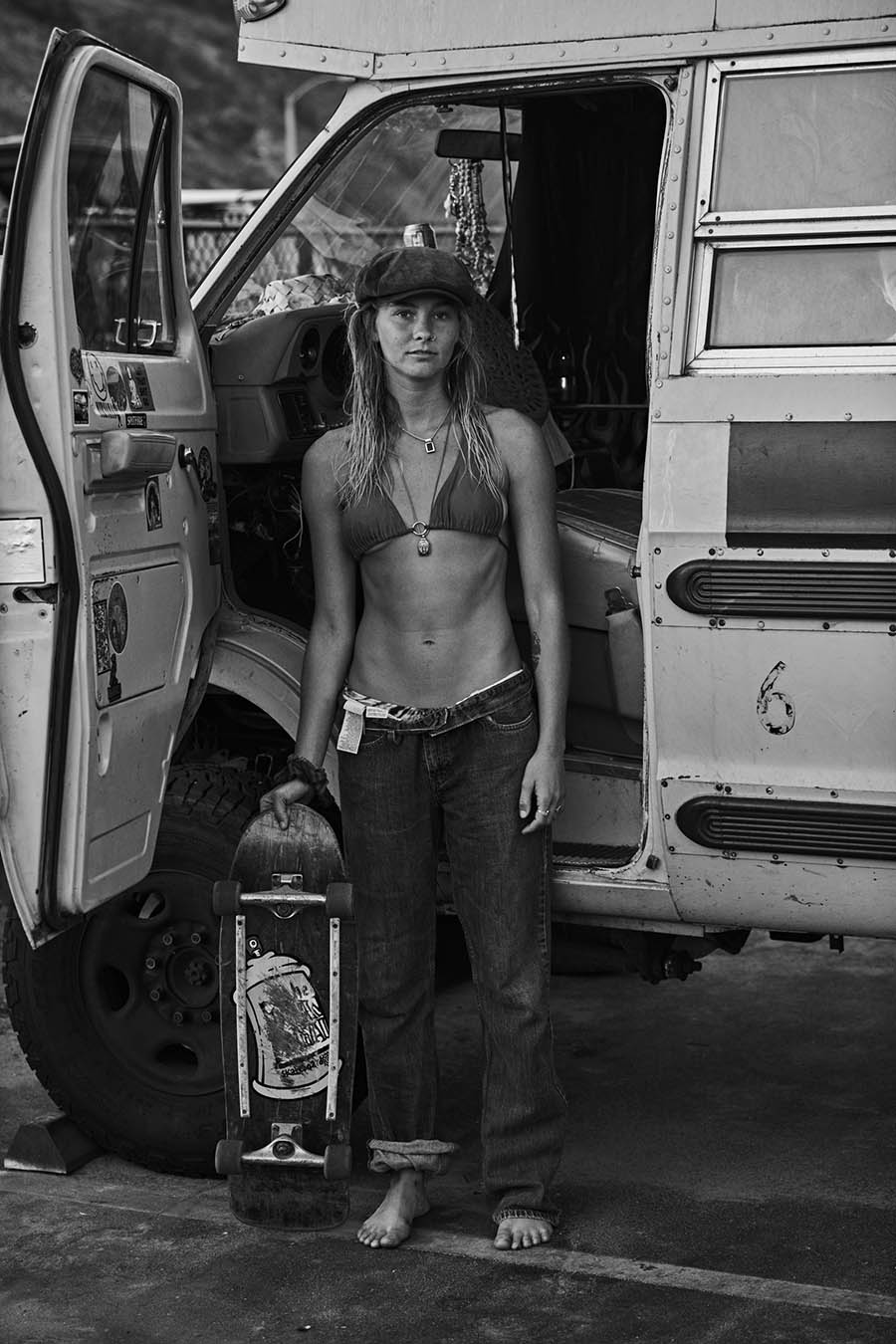
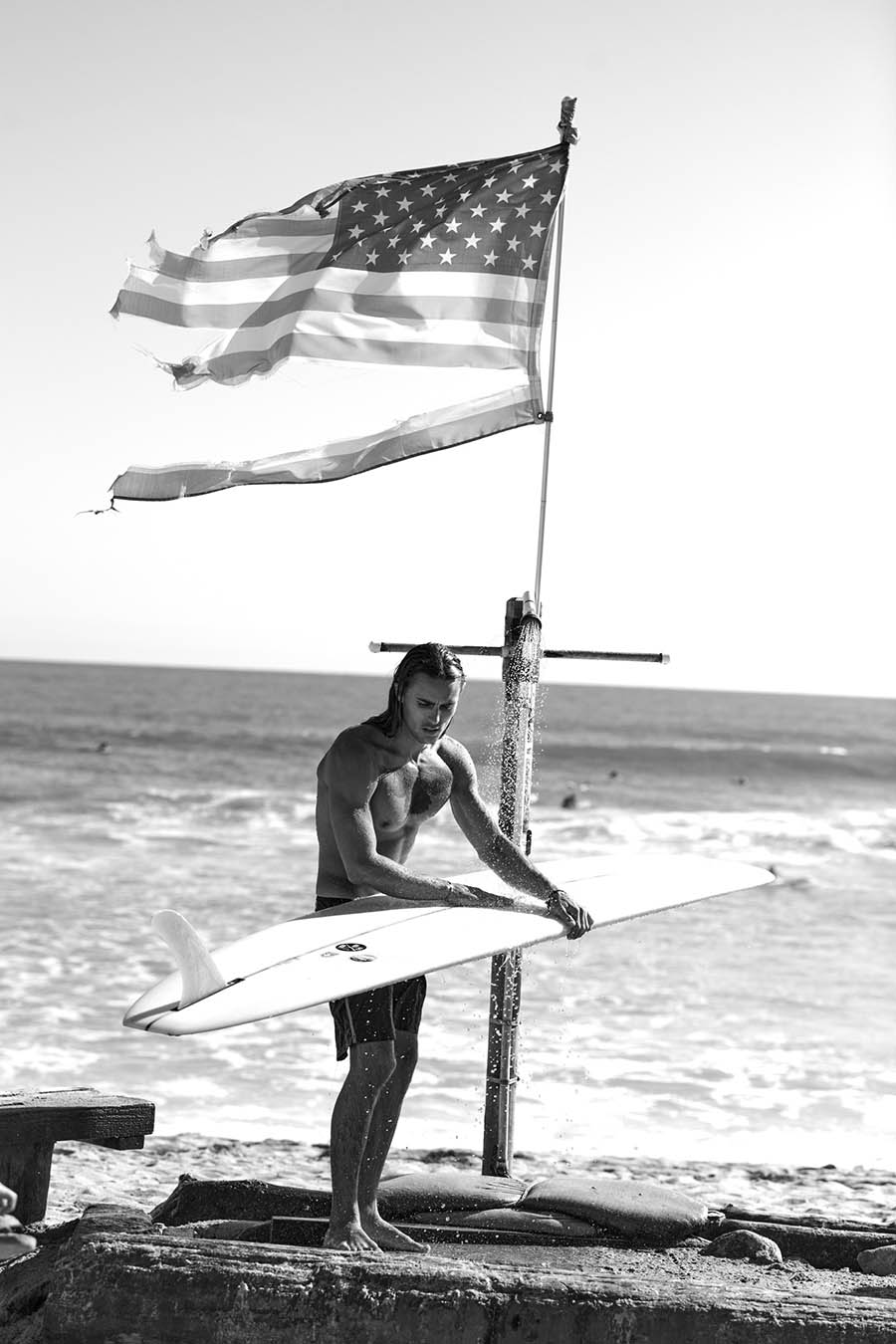
That’s wonderful to hear! A side question if you don’t mind: for some creatives, water has always been their muse, a source of infinite healing and inspiration. Do you have the same affinity towards water? I am curious as I can imagine how it accompanied you throughout your project.
I guess I am drawn to water and the sea as I grew up by the ocean. I also spent months traveling up and down the coast of California watching and photographing the surfers in the water, so that felt very meditative and healing.
Water to me is linked to emotion in my psyche. I’m very drawn to photographing the emotion in people and the way they express themselves. I’m always trying to look beneath the surface with people. Also, I feel like shooting someone is like surfing – you are constantly navigating the waves of emotion with people until you find the perfect shot.
For me, the perfect shot is the one where you look at a portrait of someone and it takes you on a journey or reveals something very intimate or unexpected about the person.
Did you ever imagine van culture before your monograph? Did the actual one live up to how you envisioned it?
Before this project, I imagined living out of a van more as a form of homelessness or because of financial difficulties, but not as a lifestyle choice. After witnessing what I saw I could imagine many people being drawn to it, either as a travel holiday or more long term. It’s a form of “living the dream” in a way that is more unexpected.
Have you always been fascinated with van culture? Have you tried it before, or did you try it for this series?
I knew very little about van culture before this project, but now, it’s a dream of mine to buy a van and take a long vacation living out of it and traveling around the US or Europe.
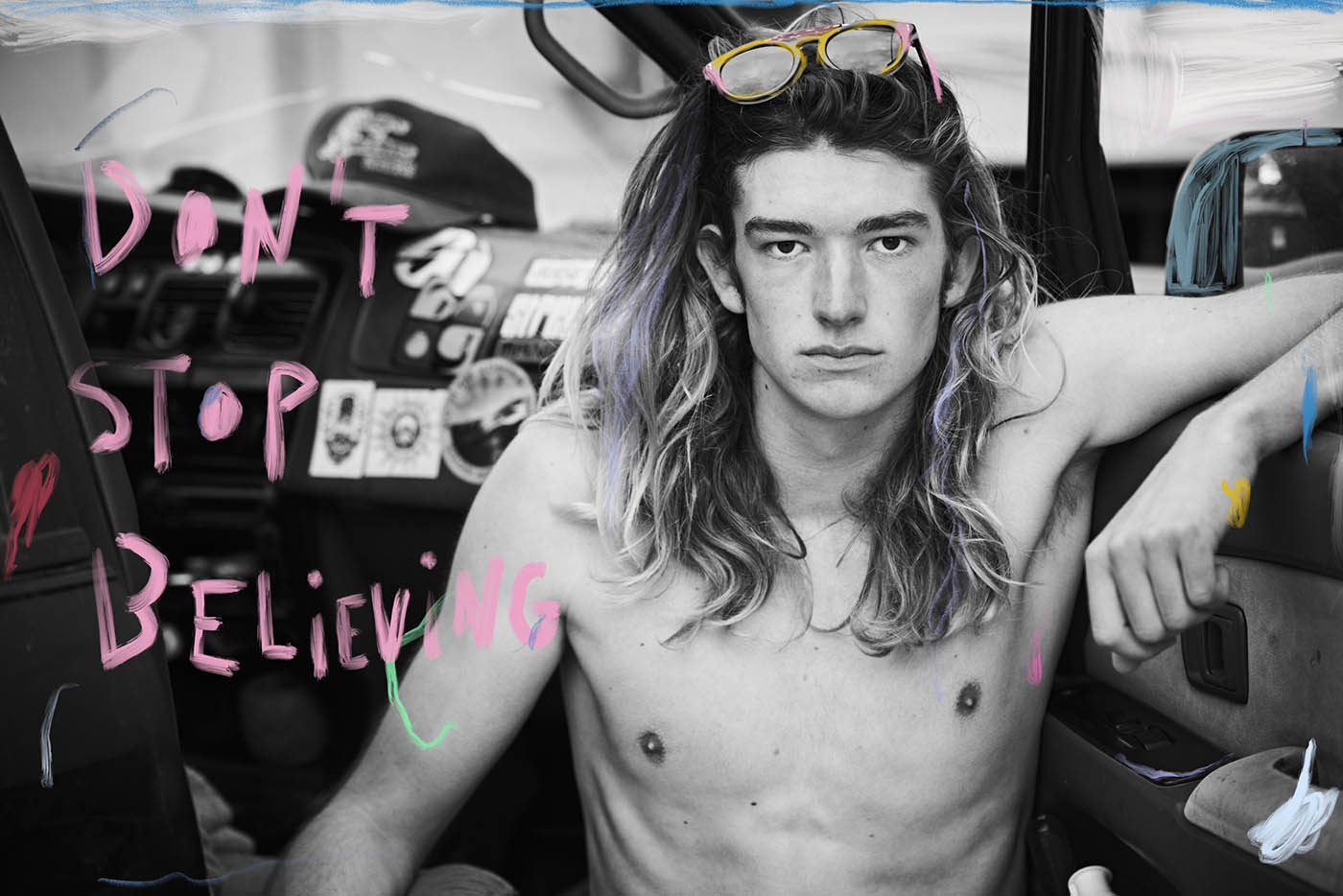
I understand that Zack Raffin did the interviews for the book and to accompany your images, but when you spoke with the surfers, what stories stuck with you?
The stories that struck me were the surfer’s philosophy on life. They all had a kind of artistic and creative view of life, quite philosophical and introspective. I loved the way they described surfing and life as a “flow”. It seemed to be a common philosophy with all the surfers that I met: finding balance and flow.
The brief mentions that this is “a story of youth choosing to follow their dreams, living out of vans, existing for surfing and travel and freedom, and always chasing the best waves.” Touching on this, have you always chased your dreams? What do you live for today?
I’ve always been a big dreamer. I suppose that’s part of being an artist, dreaming big and living in your imagination. I realized at an early age that I was not good at many things, so when I finally discovered photography and that it came naturally to me, I focused everything I had on this newfound passion.
Today, I have to admit that I’ve already achieved all the things I wanted to achieve and more in my career as far as which clients or magazines I have worked for. Right now, I’m on a more personal venture of how I would like to communicate with the world and, in some way, inspire young creative people around me to also follow their hearts and creative passions.
Continuing the last question, how do you feel about the relationship between travel and freedom? When do you feel your most liberated self?
After traveling intensively for so many years for work, I guess I’m a nomad too. I’m used to being on a plane every week, so the feeling of travel and freedom are very linked to my experience. I love the feeling of arriving in a new place and the excitement of not knowing what will happen. In my work, I find that I always feel refreshed and inspired when I discover new places.
I feel most liberated when I have a camera in my hand; with nobody behind me telling me what do. That’s why personal projects are so important to me – they are a kind of reset and therapy.

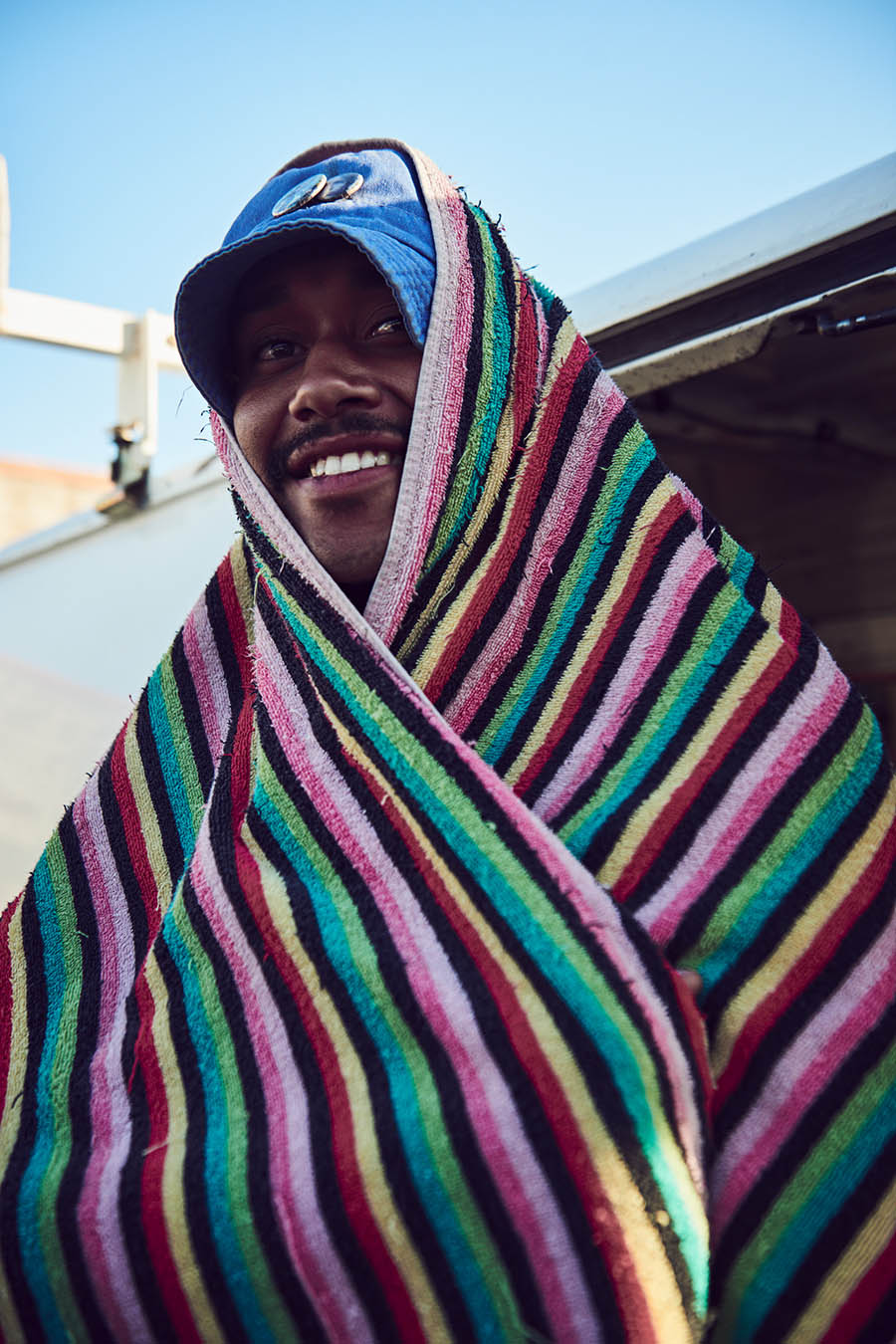
Another side question: I read that you have always been fascinated by the dynamism of the human form in motion. Have you dabbled in any activities concerning movement?
Well, my father was a professional football player, and I grew up playing tennis. My whole family was involved in sports in one way or another, so I guess watching bodies and their movement was something that I observed from a very early age.
As far as any kind of dance is concerned, I cannot dance at all! Maybe that’s why it fascinates me to watch dance and to photograph it. I’m fascinated by watching people dance, especially contemporary ballet. I have many friends who are ballet dancers, and they are the most hardworking people I know, pushing their bodies to the limit every single day!
Your first monograph consists of portraits of the ballet dancers of the Paris Opera. This one focuses on surf life. Are you already planning the next one?
I have another project in my back pocket, one that I have started but still need to work on. It’s a very exciting and beautiful subject, but I’m saving the announcement for a later date.

For more information, please visit Damiani’s website damianieditore.com
Text & Interview by Matthew Burgos
Edit by Yves Tsou
The Obsessed
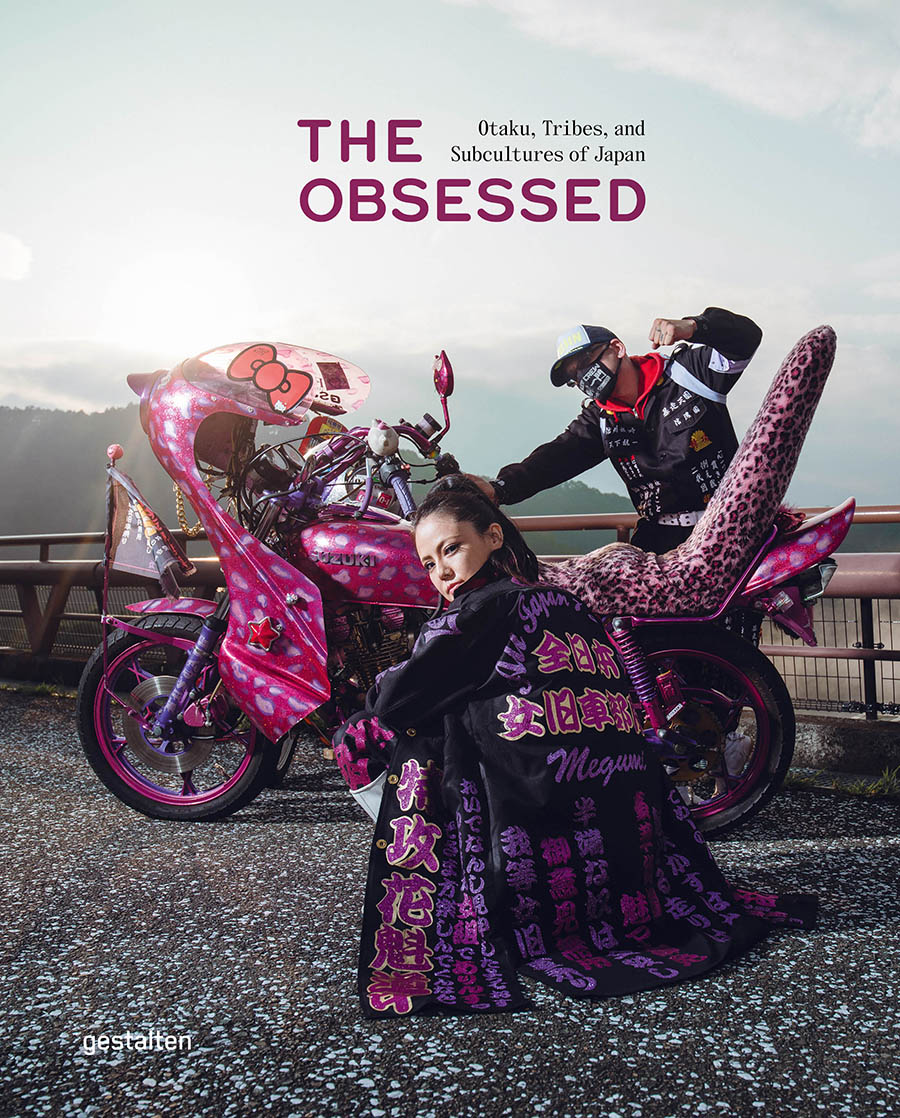
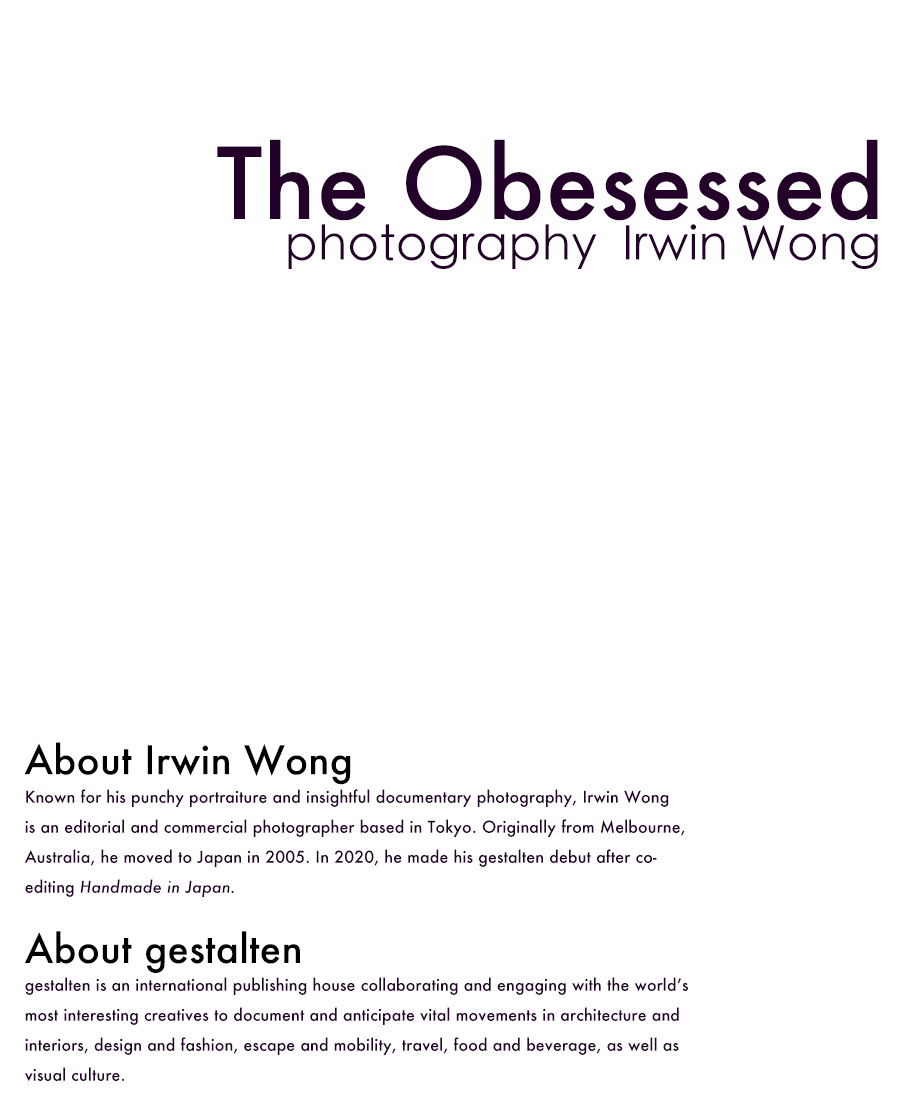

© Irwin Wong, TheObsessed, gestalten 2022
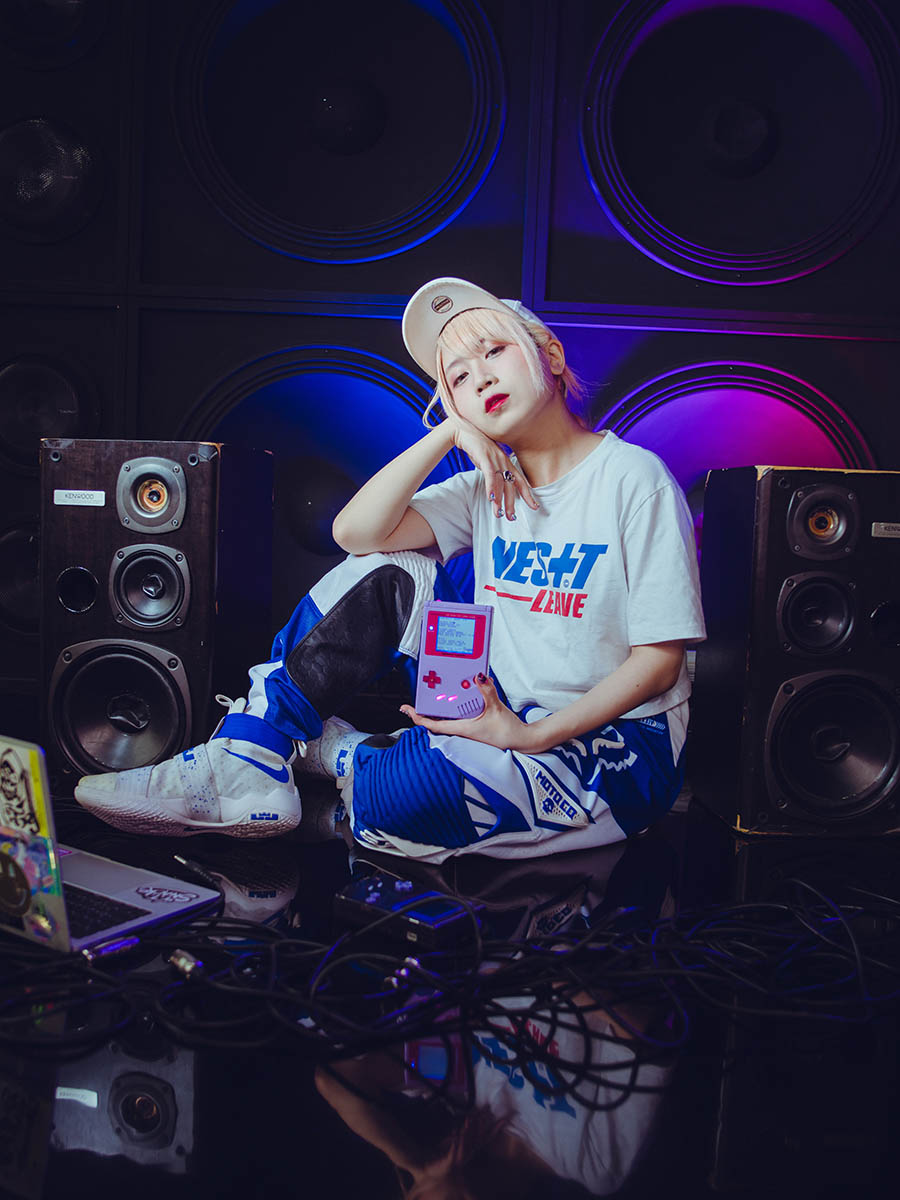
© Irwin Wong, TheObsessed, gestalten 2022

© Irwin Wong, TheObsessed, gestalten 2022
What we talk about when we talk about Japan? As one of the main cultural output country in today’s world, it isn’t really hard to spot bits of Japanese culture in our quotidian life, whether traditional or modern. While traditional Japanese culture is deemed as profound and sophisticated, Japanese pop culture and its spinoffs are often the most playful, diverse, and probably, ubiquitous ones.
Aside from a variety of mainstream pop culture, the subculture that ramifies under also has an impactful presence; amongst them are the anime, manga and games. Often regarded as esoteric from outsiders, the revenue that these “Nijigen” (Two-dimension in Japanese, used to describe the virtual world in anime, manga and games) works generate is substantial. The term Otaku is coined accordingly to describe the die-hard fanatics with interests in anime and manga. Their passion is all-consuming, whether it be cosplay, Lolita, gothic or maid café, and their obsessions towards it is beyond fathomable.
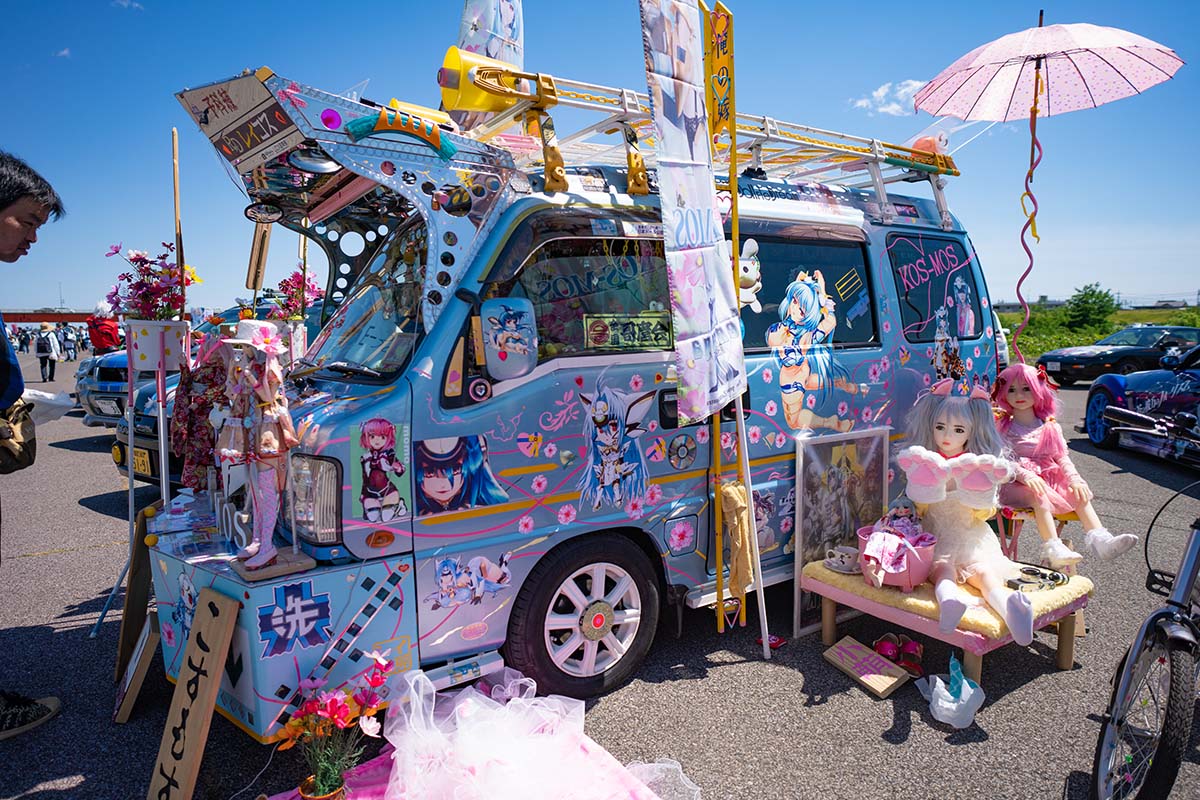
© Irwin Wong, TheObsessed, gestalten 2022

© Irwin Wong, TheObsessed, gestalten 2022
Mesmerized by this distinctive social phenomenon, Australian photographer Irwin Wong turned his insightful observation on it into his latest publication. Living in Japan for more than 15 years, Irwin documented these eerie yet intriguing moments through his lens and compiled them to his new book “The Obsessed”. Accompany with on-the-ground interviews and cultural essays, “The Obsessed”, created in collaboration with gestalten, showcases a kaleidoscope of scenes and individuals drawn from Japan’s many countercultural group, pinpointing their place within Japanese society and global popular culture. As a thorough discovery unfolds, Irwin invites us to an in-depth gaze into the essence of these Japanese subcultures, and the lives of people who dedicate their passion and obsession to them.
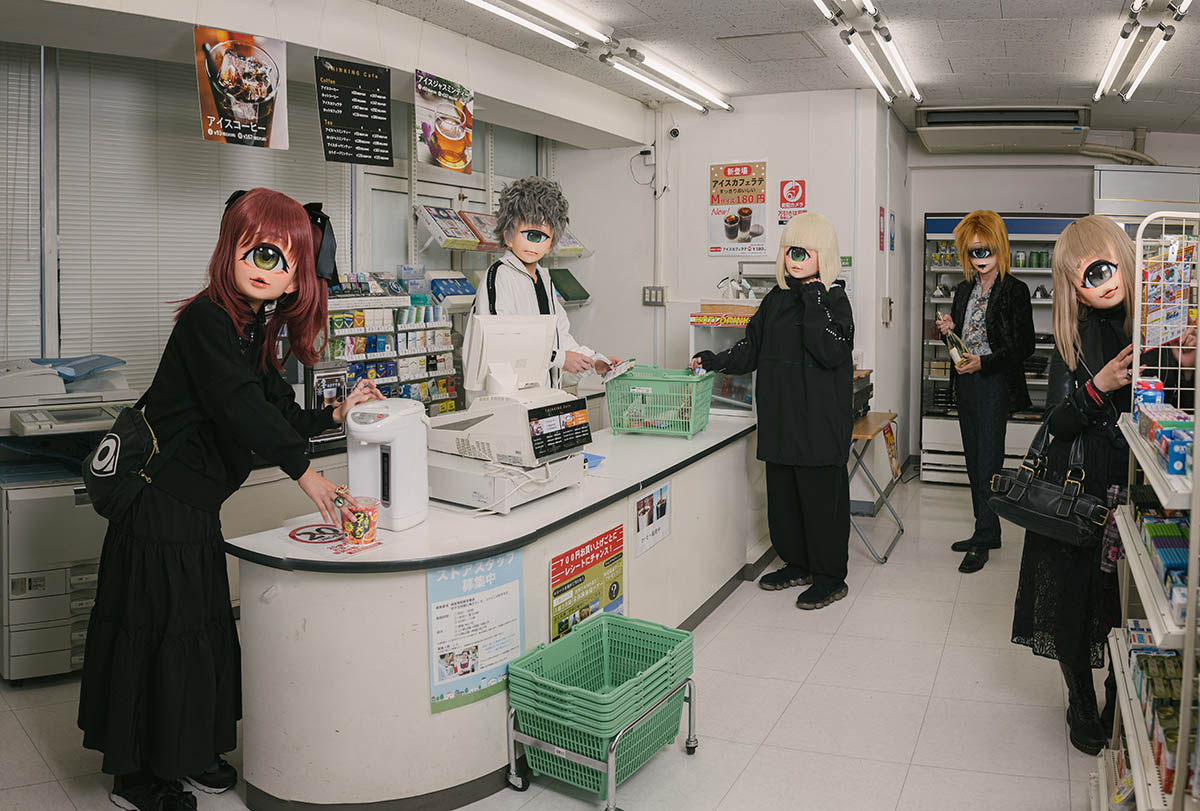
© Irwin Wong, TheObsessed, gestalten 2022
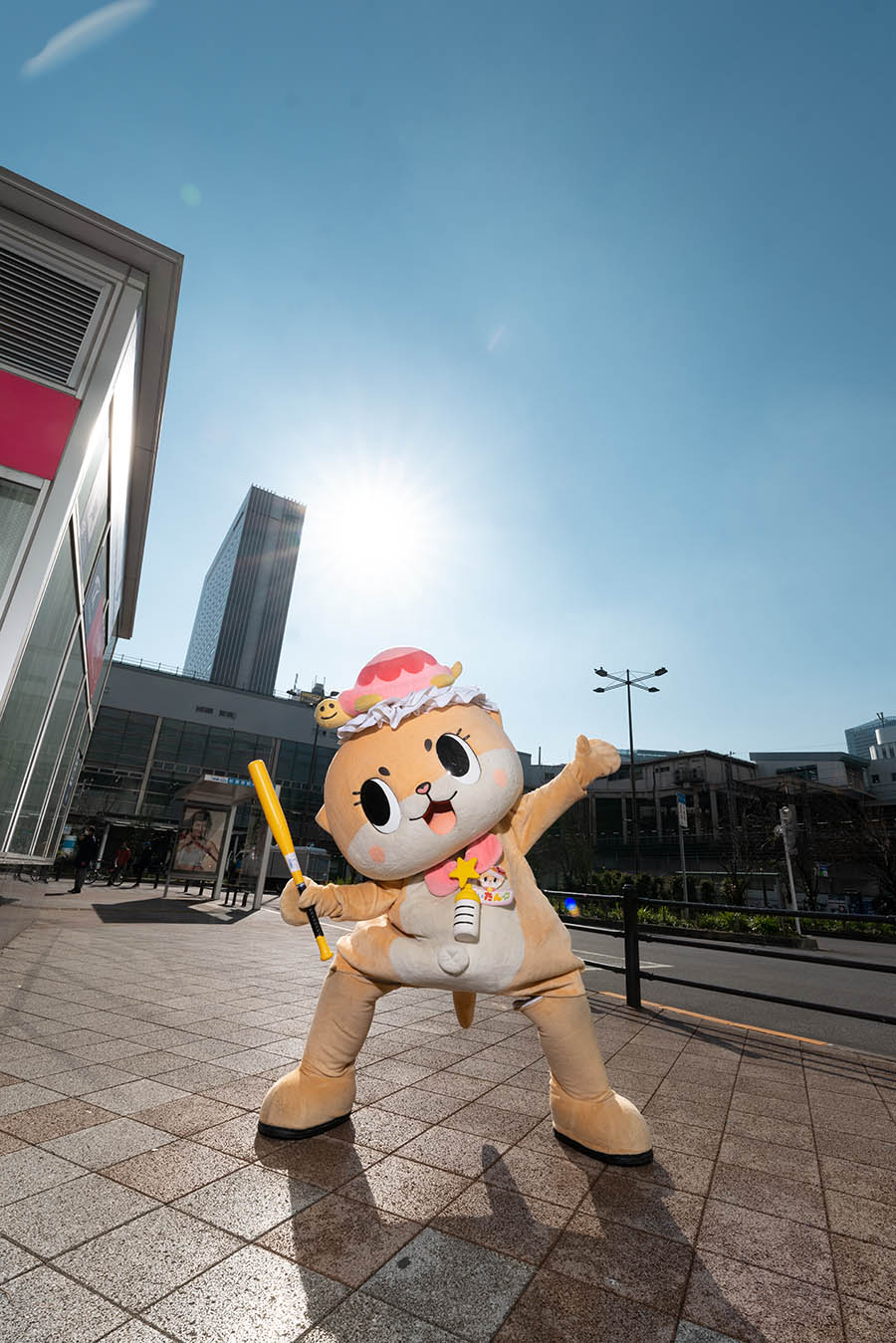
© Irwin Wong, TheObsessed, gestalten 2022

© Irwin Wong, TheObsessed, gestalten 2022
For more information, please visit gestalten’s website gestalten.com
Text: Yves Tsou
Balenciaga Objects: Tiger Sculpture
The Tiger Sculpture
The latest Object signed by Balenciaga
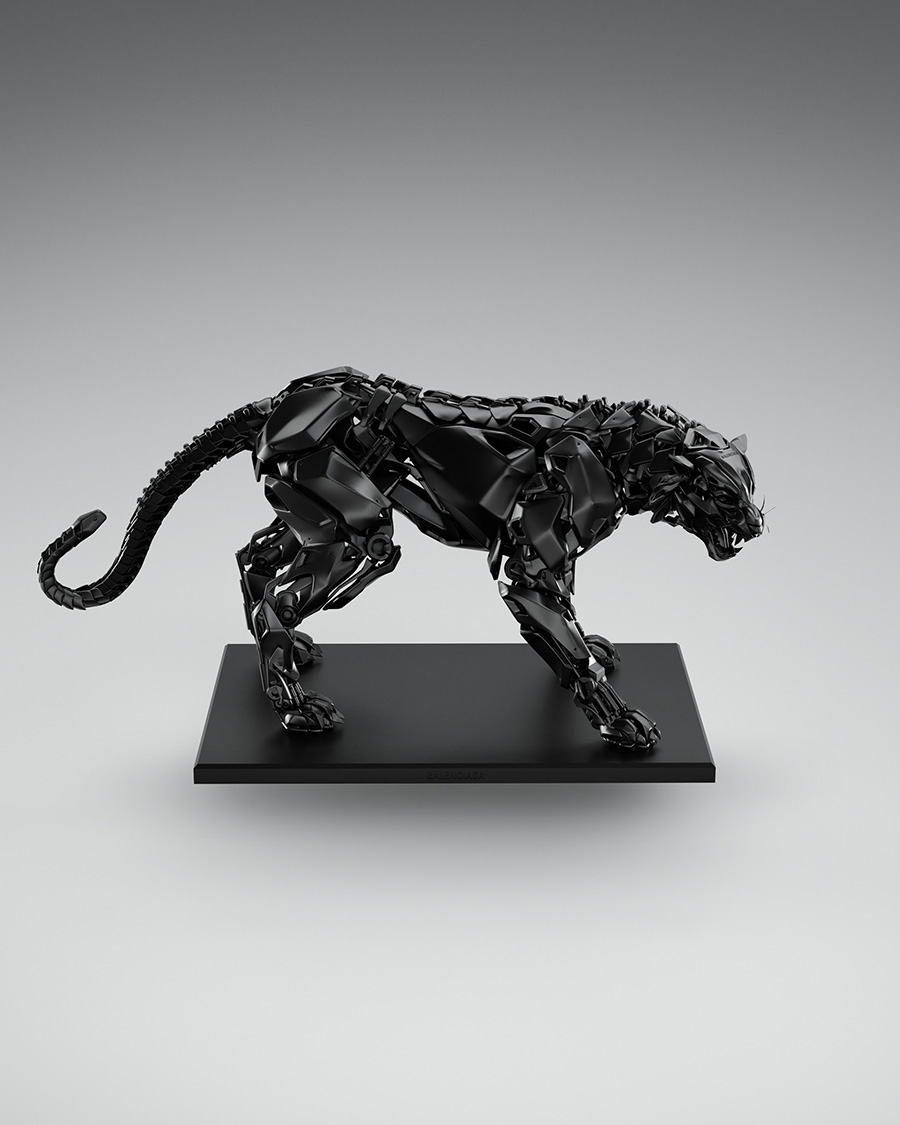
Since the appointment of Demna Gvasalia as creative director in 2015, Balenciaga has continually been challenging the very idea of what it means to be a luxury fashion house. The latest offering from their Balenciaga Objects collection, a handcrafted tiger sculpture, continues to embody this spirit of subversion. During Demna’s tenure, he has embraced the anti-consumerist stance of slow fashion, choosing to release only one haute couture range a year. Thus, as we arduously endure the wait between these collections, the Balenciaga Objects line is a welcome relief, allowing us a glimpse at the wider creative direction of the brand under Demna’s guidance.
The man behind the sculpture is post-modern artist Nik Kosmas, whose oeuvre sardonically observes the state of technology and the human experience in the 21st century. Based in China’s mega metropolis Shanghai, Kosmas’ work is a physical, emotional, and spiritual journey inspired by science fiction, sports practice, and psychology. The sculpture itself would not have looked out of place in the brand’s SS22 show, with its sleek all black appearance resembling the ‘Cyber Goth’ aesthetic of that range. Despite the futuristic hybridity of the piece, its handcrafted nature stays true to the roots of the brand. Kosmas’s brass shaping of every aspect from the whiskers to the vertebrae reflects the ethos of bespoke luxury that has been at the heart of the brand since its inception.
Launching on November 20th, 2020, Balenciaga Objects is a category of items produced outside of the fashion collections. Having released various items of homeware over the last couple of months, ranging from laser-engraved glassware to reusable porcelain coffee cups, this latest venture represents a stylistic shift to the ornamental. The Objects collection now offers the decorative as well as the functional.
Presented on 38 x 27cm display platforms, there will be 15 numbered editions of the product released worldwide. Each model undergoes a meticulous process of craftsmanship; the individual components are shaped using the ancient technique of lost-wax casting, before being welded coated and glossed by hand.
As various fashion houses face accusations of lacking originality or recycling ideas, this release represents the latest in a long line of successes from the brand that just seems to keep getting it right. All that is left to do is to eagerly await whatever the next steps may be in this truly innovative era of the iconic brand’s history.
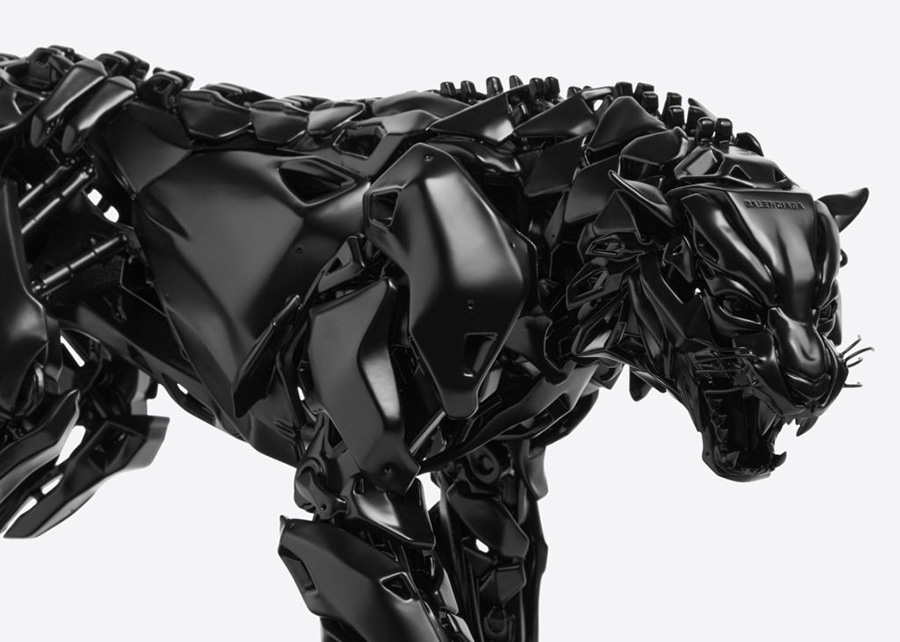
Text: Harvey Byworth-Morgan
ModaPortugal 2021 - A Fashion Event for the Future
Portugal has long been on my bucketlist. As an avid traveler and fashion enthusiast, Portugal’s long-standing history, distinctive culture, palatable gourmet and poetic cityscape fascinated me. After learning that Portugal is one of Europe’s major fashion and textile production countries, my desire to discover this beautiful country was fortified. COVID-19 sabotaged my two trips planned for Portugal; I thought it would be long before I could finally step onto her soil.
I’ve envisioned dozen ways to encounter Portugal, but little did I imagine myself lost in its beauty thanks to ModaPortugal. Held in Porto’s once-a-customhouse congress centre Alfândega do Porto, young fashion talents, fashion journalists and a panel of speakers formed by fashion professionals were welcomed to Porto for 2021 ModaPortugal event. The old town of Porto is mesmerizing. Narrow alleyways winding up the undulating hills, alongside, ramshackle dwellings closely aligned. Their colourful façades, adorned with wooden window frames and iron-latticed balconies are in decay. Churches clad in cerulean and white “Azulejo” tiles stand within, coated with exquisite religious paintings; they echo back to the prosperity of the country during the Age of Discovery. Under the beam of Southern Europe’s winter sun, the curtains of ModaPortgual rose.
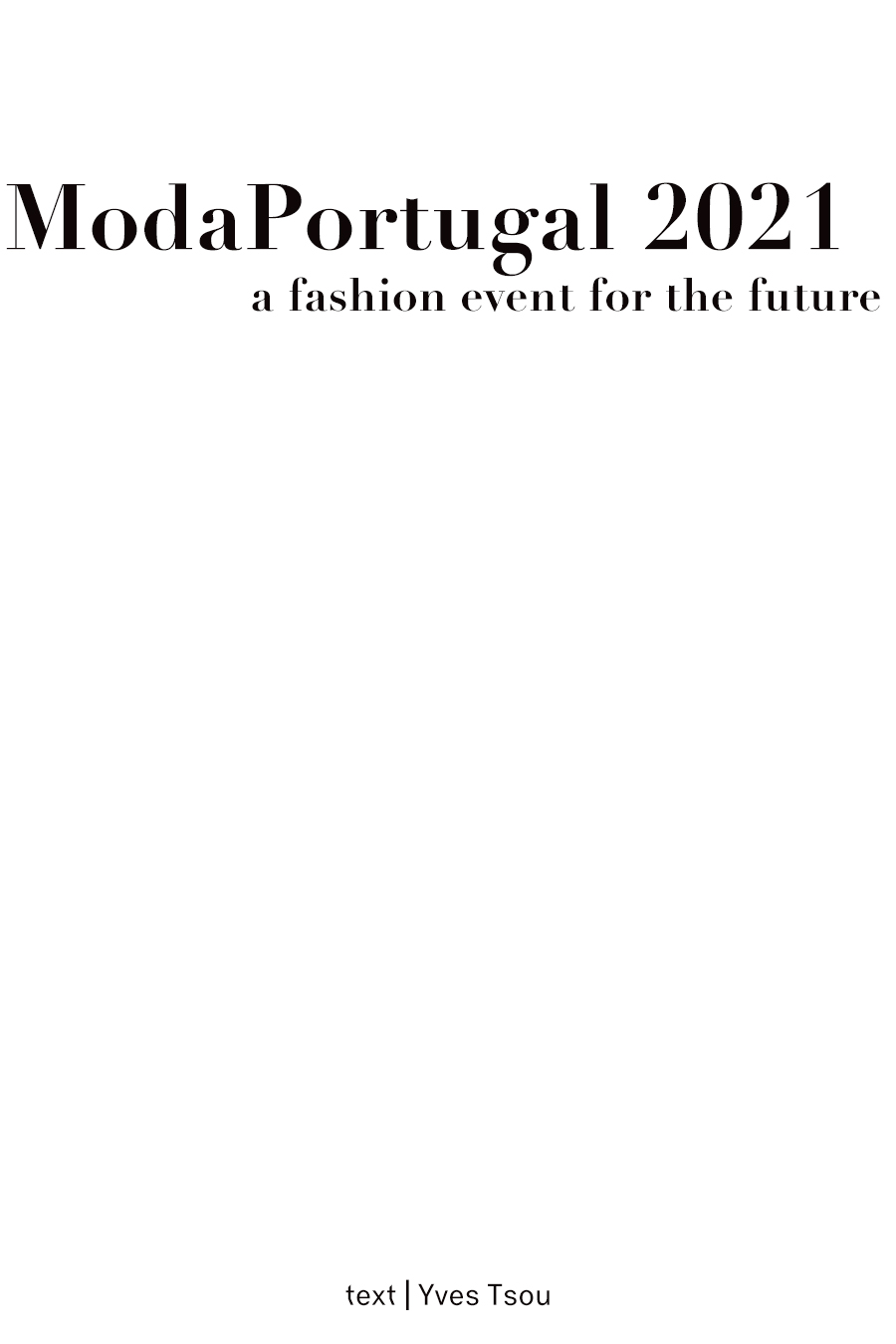
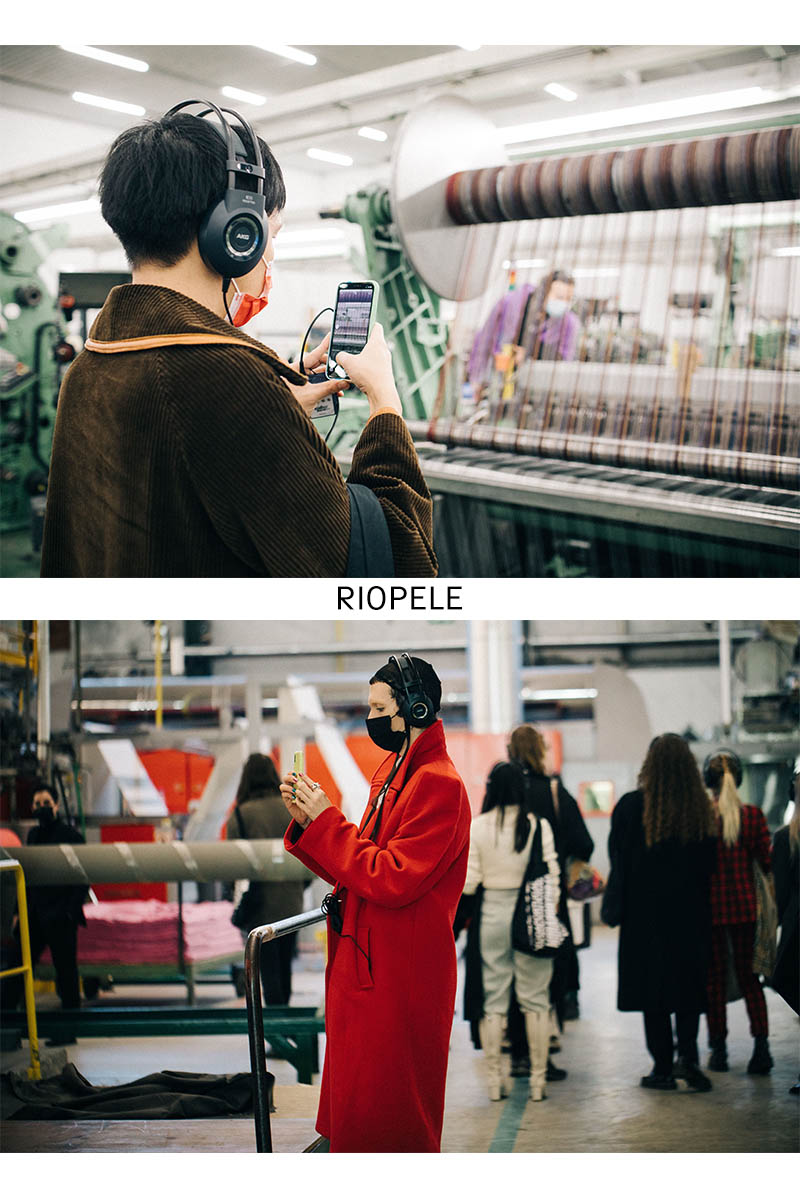
After a hiatus in 2020, ModaPortugal returned to Porto. Eighteen designers, hailing from six different countries (Finland, France, Italy, Switzerland, United Kingdom and of course, Portugal), gathered to Porto two weeks ago for the 7th edition of ModaPortugal Fashion Design Competition. These emerging young talents represent some of the most renowned fashion institutes across the continent. In their five days journey, they vied not only with their schoolmates and compatriots for the best collection of each country, but also for the “grand prix” that dedicates to the best collection overall.
To better understand Portugal’s robust textile and clothing manufacturing industry, ModaPortugal took these aspiring designers, along with panellists and my fellow press on an Industry Tour around the Northern part of the territory. Since the textile industry is one of the most polluting industries, the tour revolved around the initiatives that these textiles companies have taken in response to the environmental issues. The tour started with a visit to Riopele, an established factory with more than 90 years of history. Founded in 1927, Riopele is one of the oldest and most self-sufficient Portuguese textile companies. From spinning, dyeing, weaving, finishing to quality control and logistics, Riopele vertically integrates the entire fabric production cycle. Lately, Riopele has embarked on a new research: they collected the water consumed during the manufacturing process and tried to make use of it. 50% of the water consumption is now reutilized, successfully reducing the water pollution from their production process.
The tour continued with a visit to the family-owned factory of Pedrosa & Rodrigues, one of the most well-known jersey fabric manufacturers in Portugal. Pedrosa & Rodrigues blend jersey into high-end fashion; its clients include some of the major fashion brands in the world. Its newest movement is to collect leftover fabrics, grind them and spin new yarn out from them. This repurposing of discarded fabrics definitely makes the fashion industry greener and more environmentally-friendly.
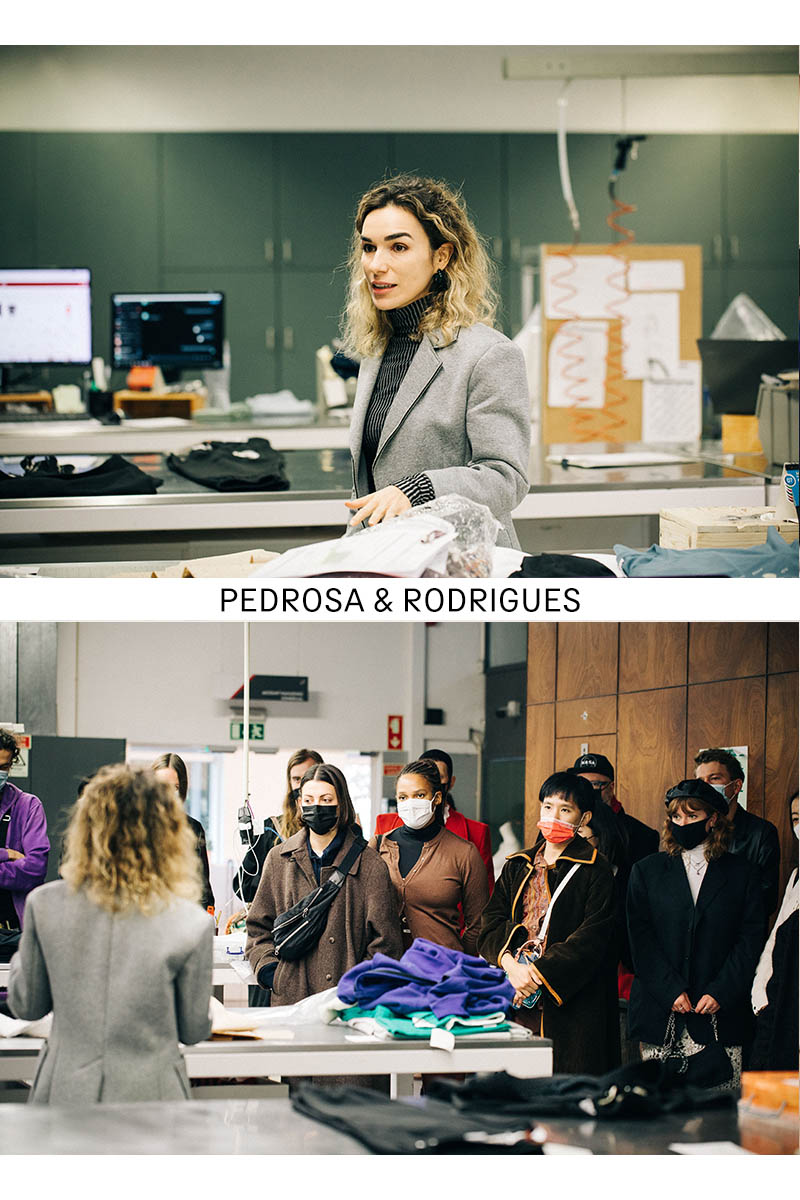
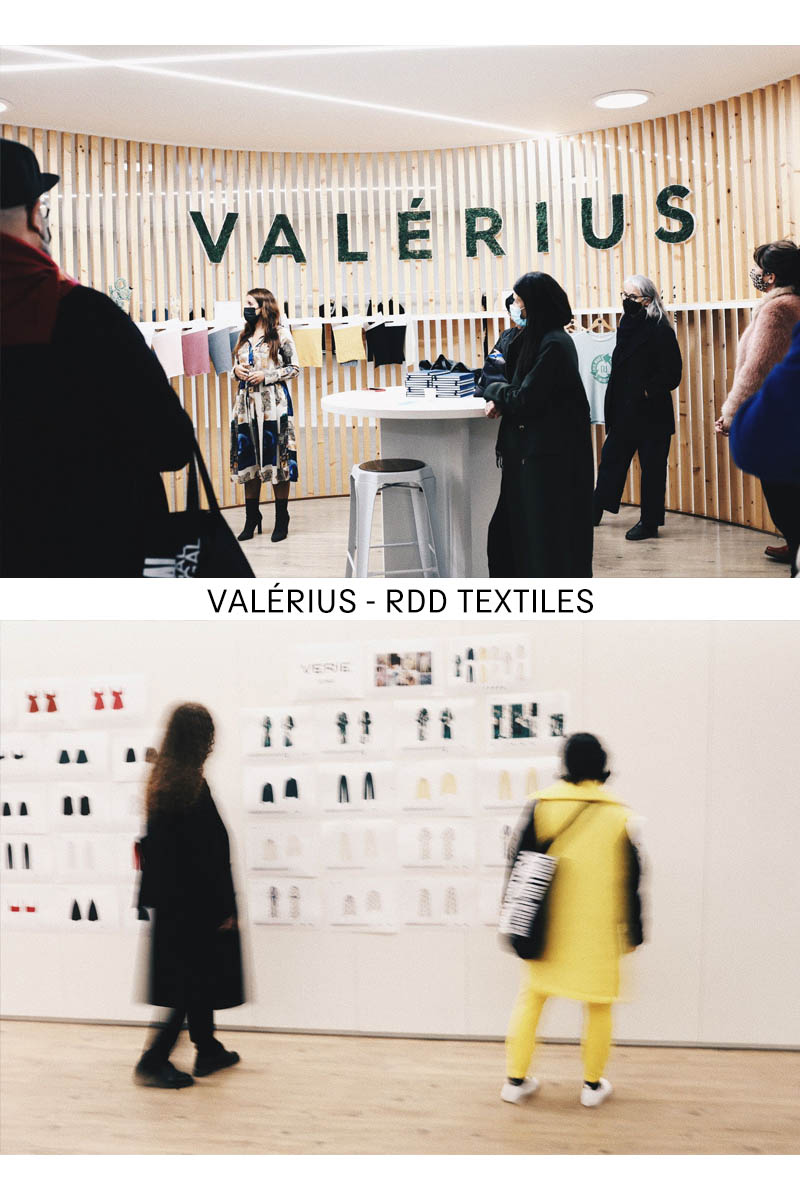
After learning a bit more about the innovative projects that traditional textile companies in Portugal have taken, we visited RDD textile and Valérius Hub, an innovatory research center focusing on the repurposing of used fabrics and the development of sustainability textiles. In 2019, Valérius Group launched a brand-new project Valérius 360 – a recycling centre that realizes the ideas of RDD Textiles and Valérius Hub. Here, the factory collects cutting waste, overproduced textile products, unsold stock and recycled fabrics from Côte d’Ivoire, Turkey and other European countries, making them into recycled-yarns, jersey fabrics and even garments. Together with Valérius Hub, Valérius 360 wishes to build a community that contributes to the creation of a responsible fashion system, reducing more environmental impacts and driving the industry towards a sustainable future.
After a day of repose, the designers ushered in their biggest challenge of this trip – The ModaPortugal Fashion Design Competition. The day started with the students taking turns presenting their collections to the jury. The event climaxed with a fashion show during dinnertime. Models stomped on the aisles in the banquet room. Grotesque or artistic, theatrical or intricate, they showcased these young designers’ flourishing imagination and creativity. Among them, Juha Vehmaanperä (Finland), Mathieu Goosse (France), Paulo Mileu (Italy), Tiago Bessa (Portugal), Claire Lefebvre (Switzerland) and Jessica Zhou (United Kingdom) won the best collection from the country they represented, with Tiago Bessa from Portugal snatching the Best Collection of the year, keeping the grand trophy home in Portugal.
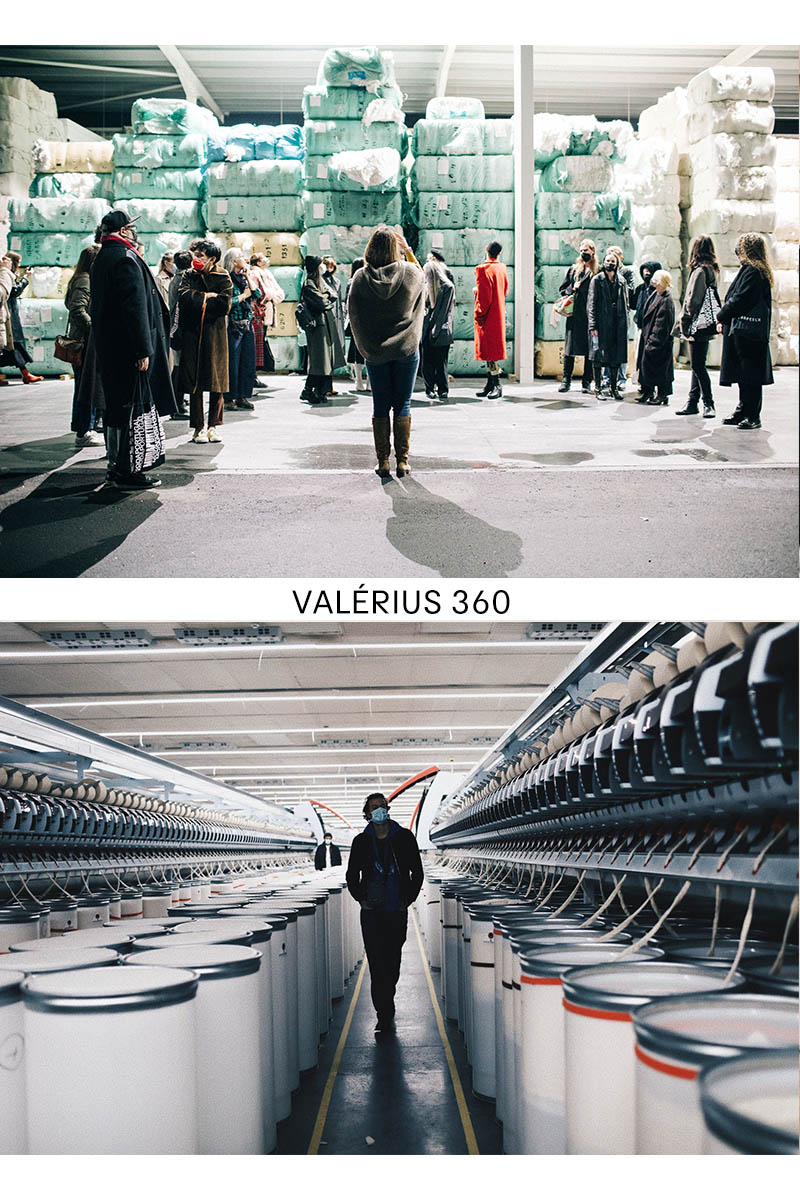
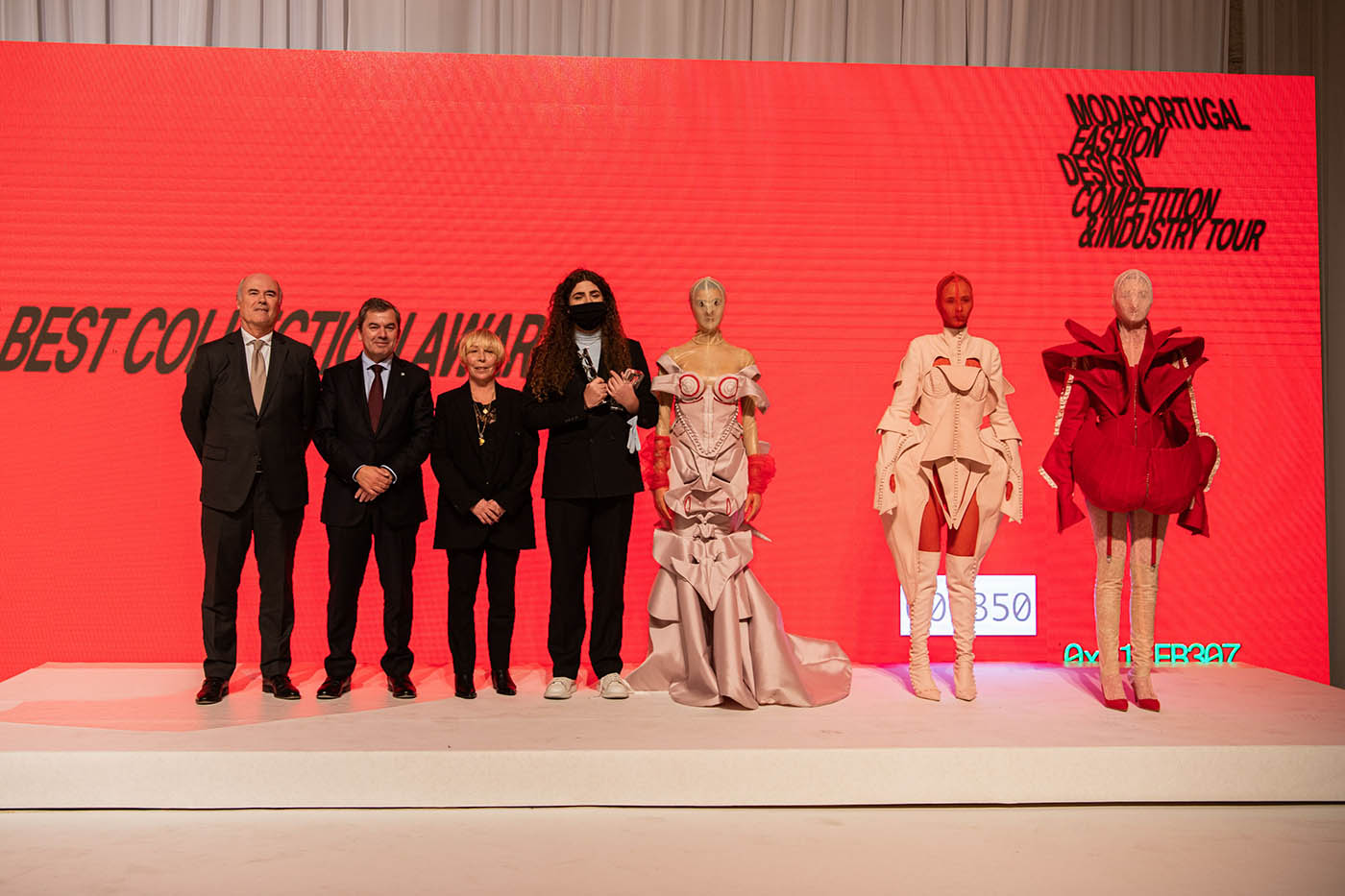
Tiago Bessa is the overall winner of this year’s ModaPortugal Fashion Design Competition
Looking back, I couldn’t imagine a better way to experience Portugal’s beauty and fashion all at once. It’s really impressive to see Portuguese textile companies taking initiatives on sustainability and eco-friendly fashion production, and to see the fashion industry supporting emerging talents. To summarize my experience at ModaPortugal, I think of the word “fascinating”. Porto’s view is fascinating, the “Azulejo” tiles on the church walls are fascinating, the serenity of the flowing Duoro River is fascinating; what’s more, It’s fascinating to know that even under an unfavourable macro environment, on the periphery of the European continent, a cohort of fashion talents is seeking to build a friendlier environment for the talents to come, and perhaps more importantly, for our Mother Nature.
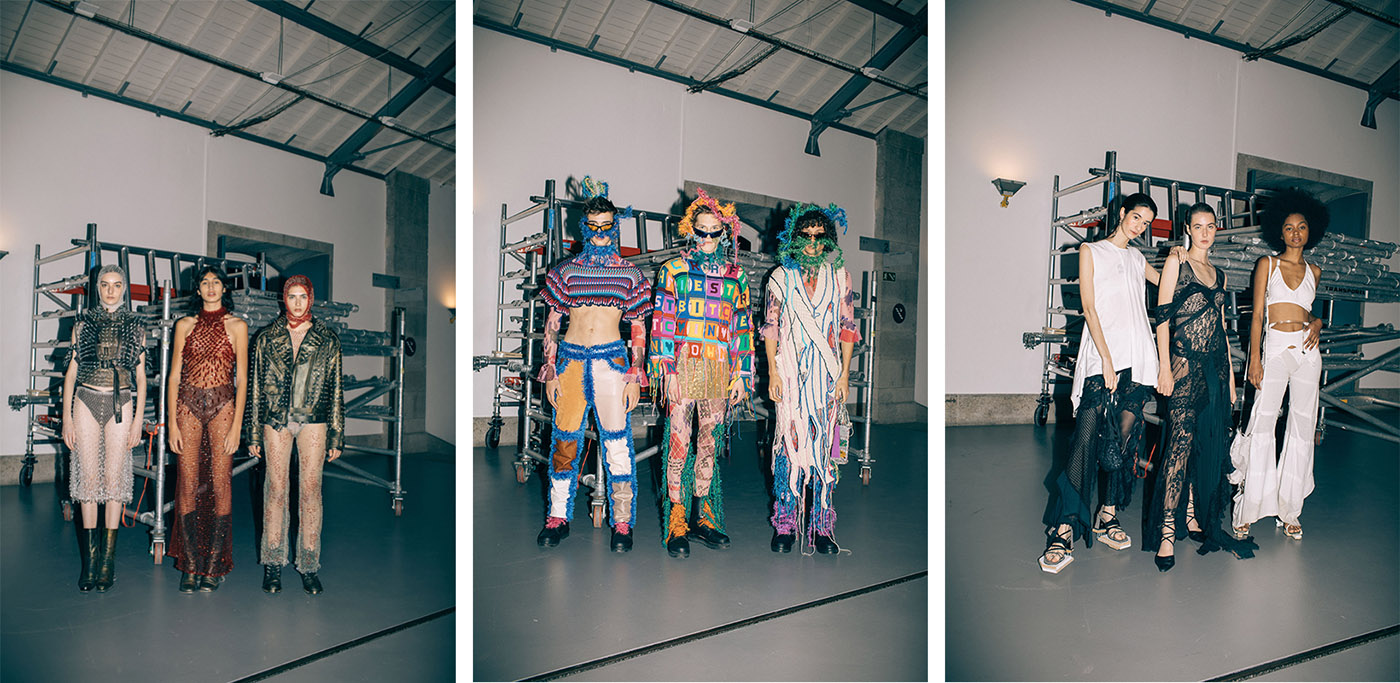
Finland | Jenny Hytönen, Juha Vehmaanperä, Sina Saavala (from left to right)
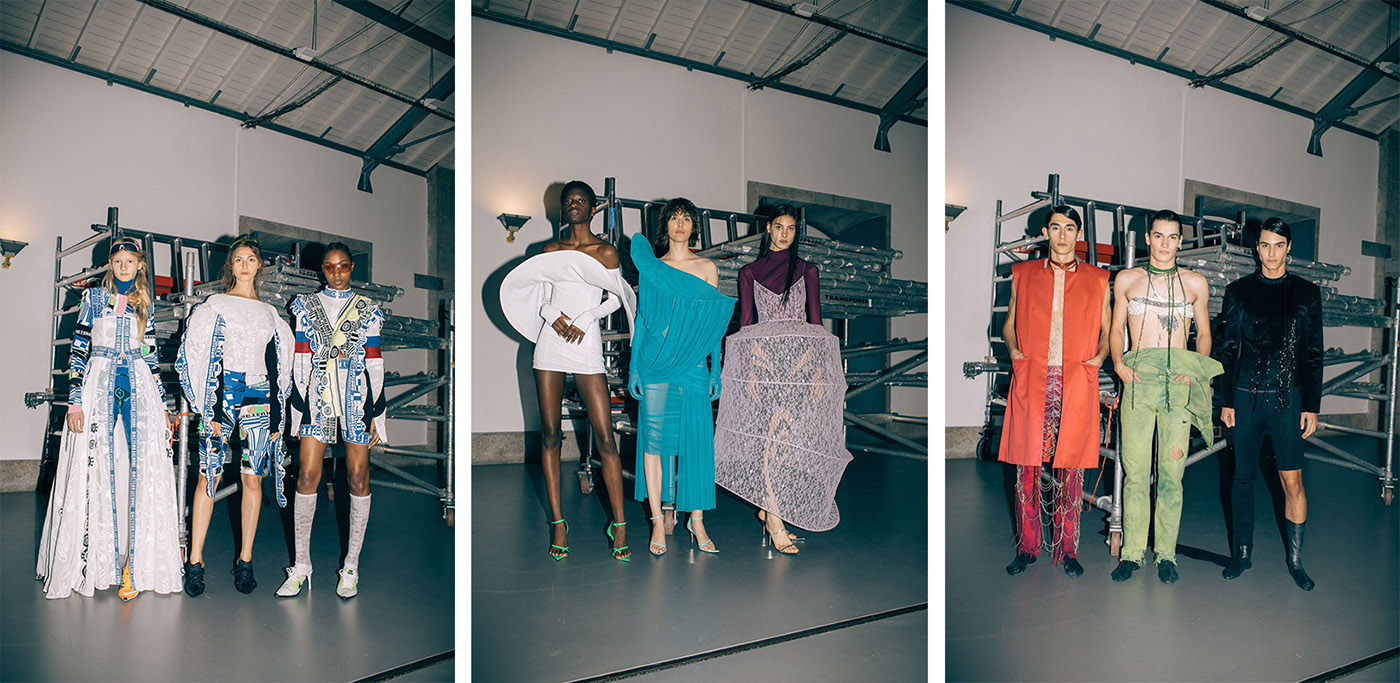
France | Albane de Saint Laurent, Jisoo Baik, Mathieu Goosse (from left to right)
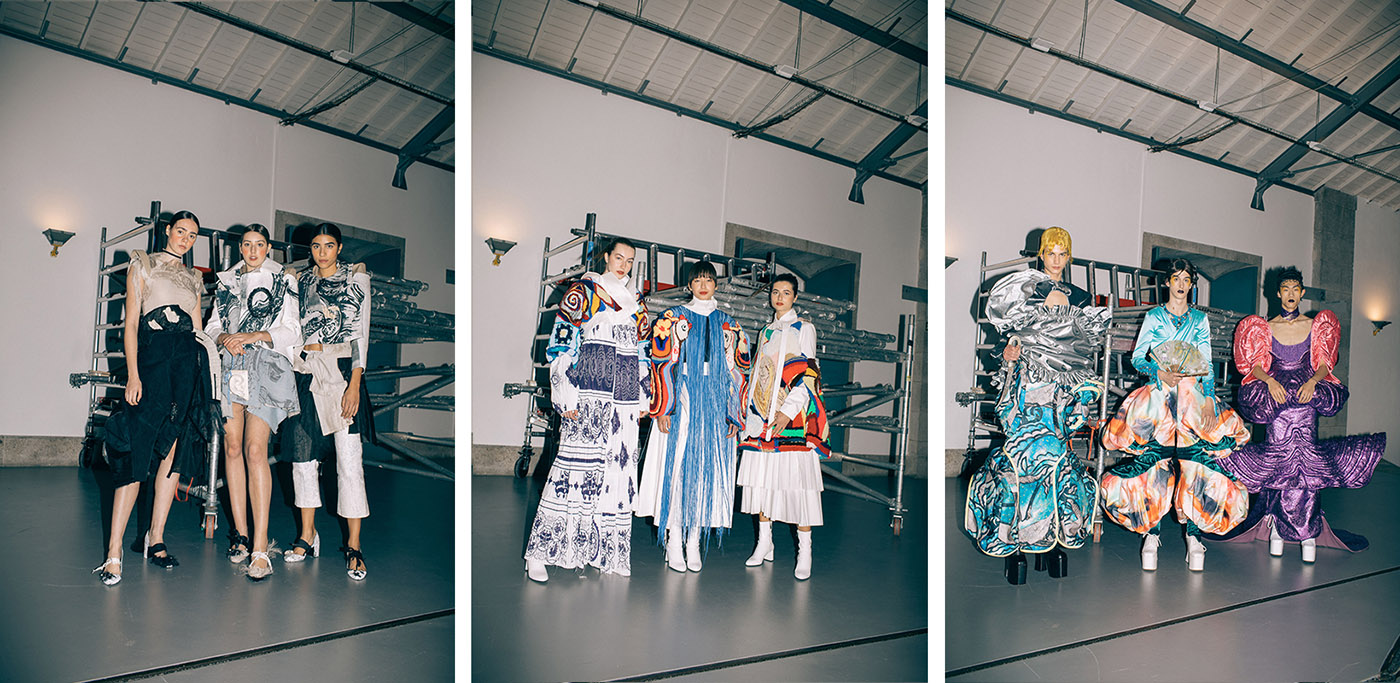
Italy | Alessia Dovero, Lavinia Jianqing Zhao, Paulo Mileu (from left to right)
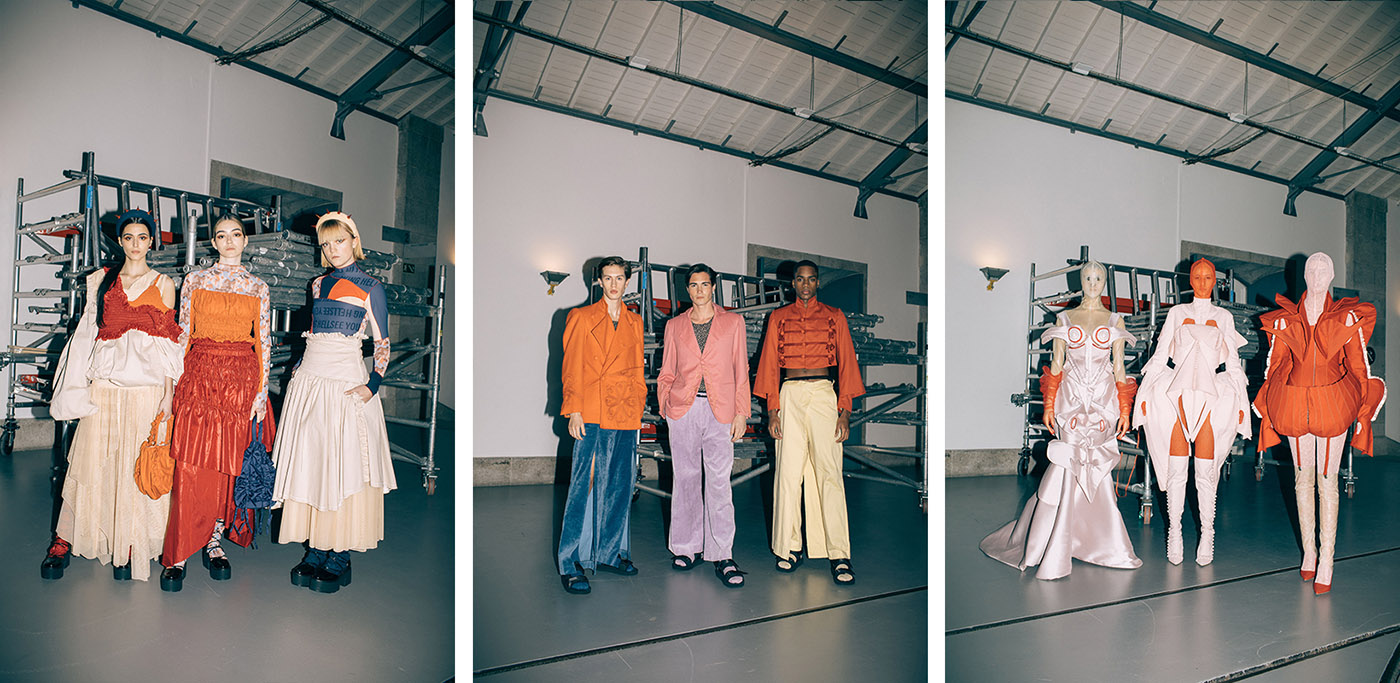
Portugal | Marta Costa, Nuno Braz Oliveira, Tiago Bessa (from left to right)
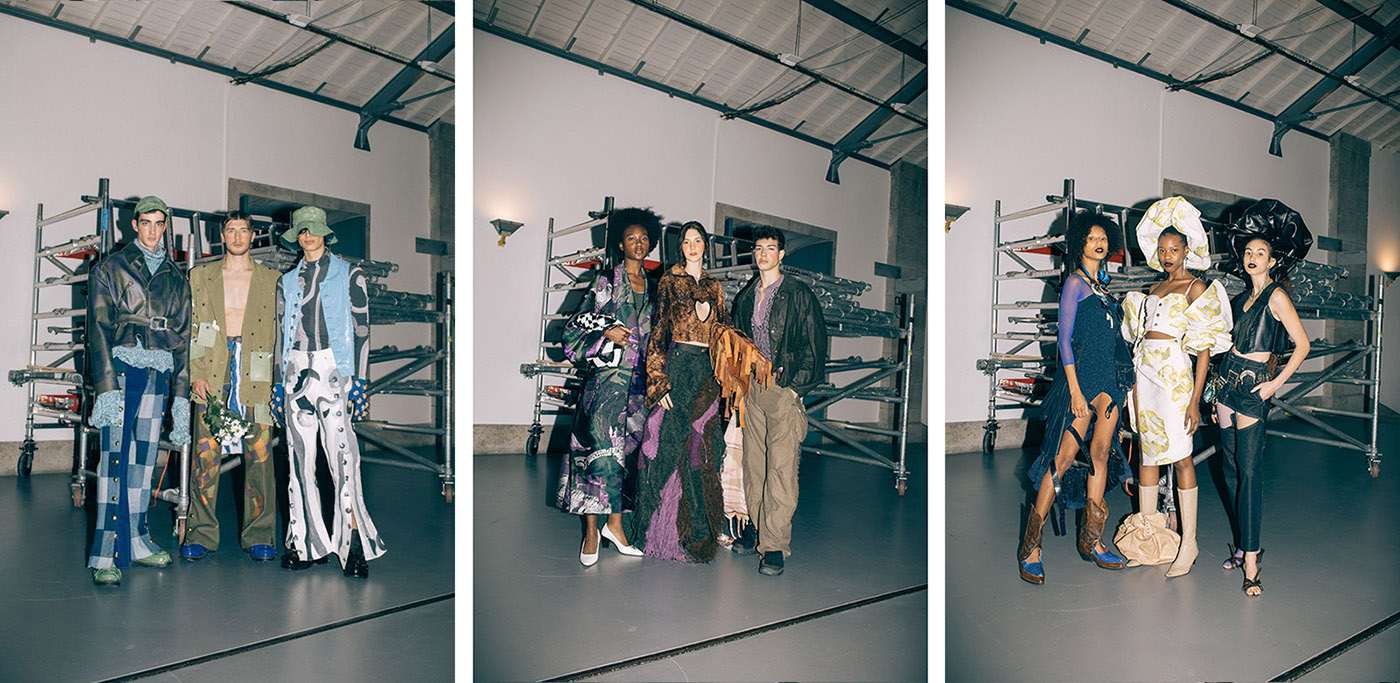
Switzerland | Claire Lefebvre, Morris Manser, Tara Mabiala (from left to right)
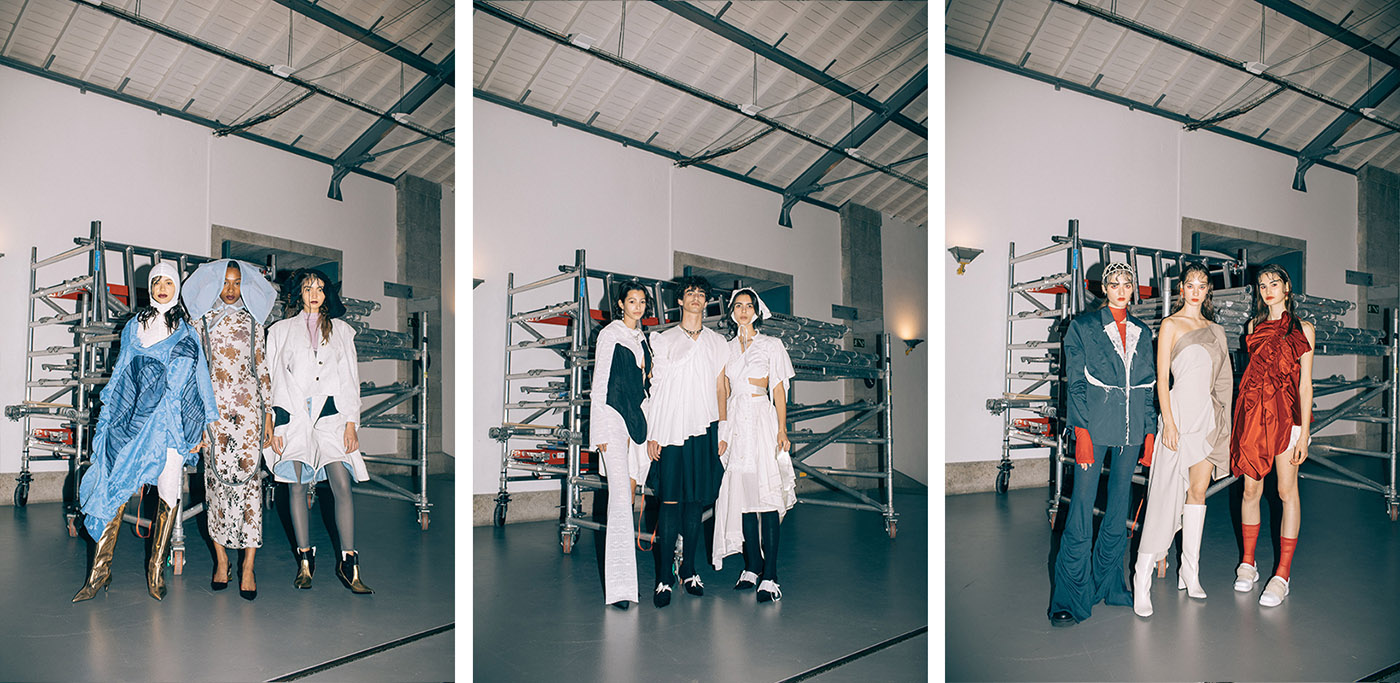
United Kingdom | ChenCheng Yong, Fionn Lucaya, Jessica Zhou (from left to right)
Text: Yves Tsou
Proofread: Mason Francis Palmer
Winter Magic: ISABEL MARANT x Mytheresa
Winter Magic
the Snow capsule collection by ISABEL MARANT for Mytheresa
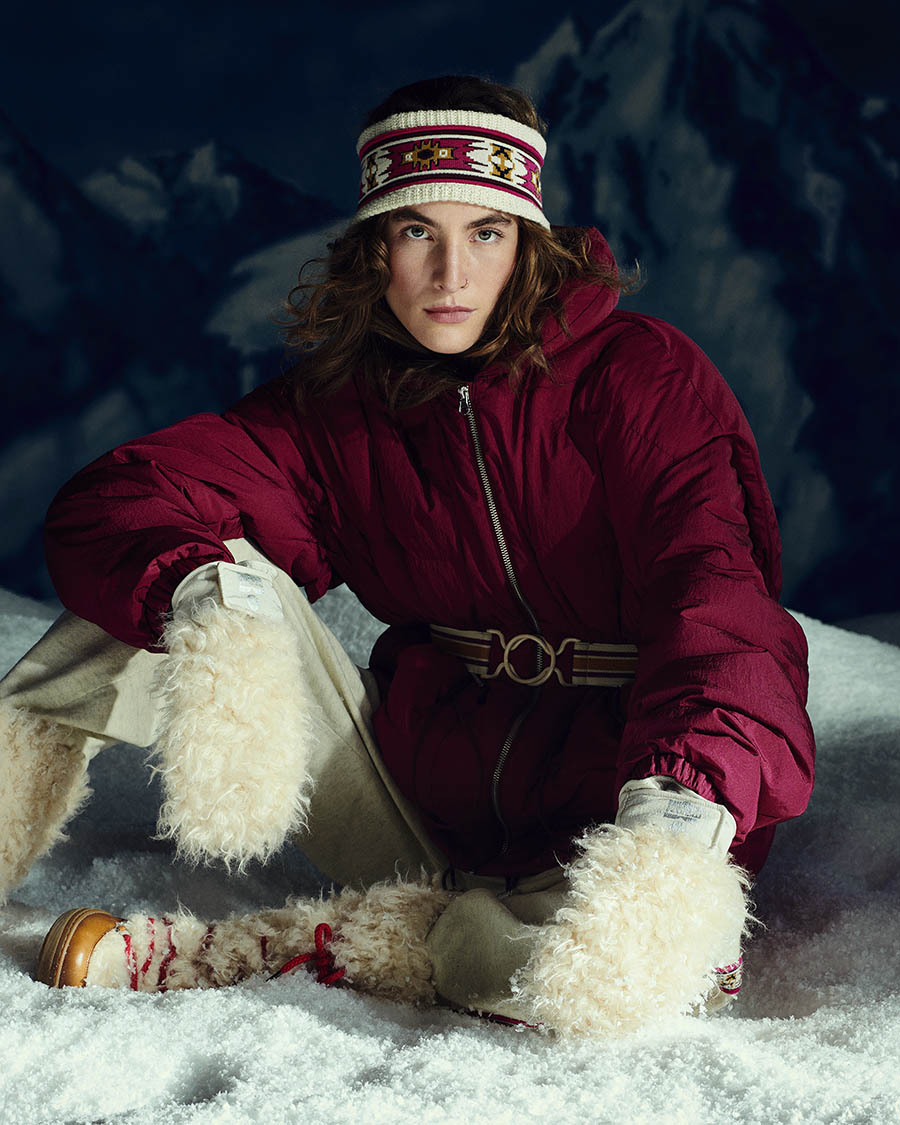
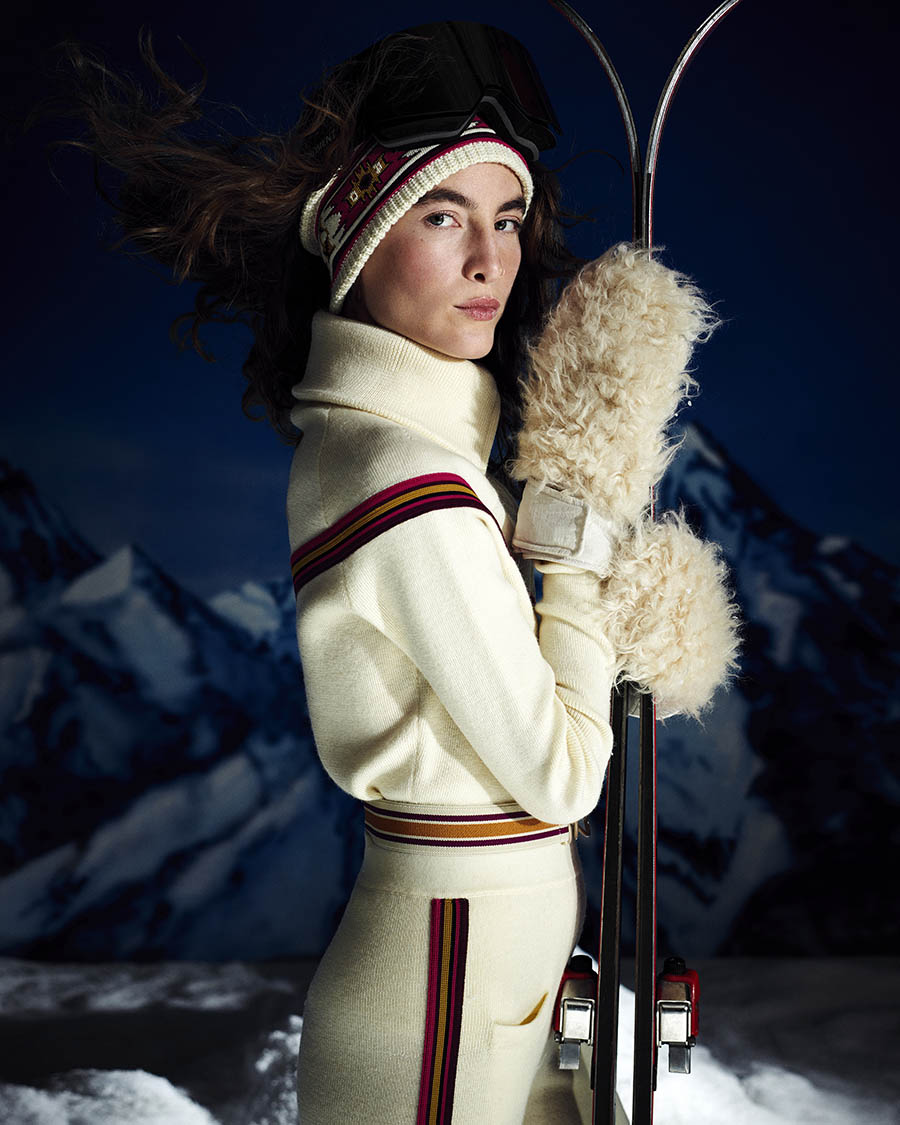
It is indeed good news for you ski lovers! Do you find it hard to complete the perfect functional look that keeps you comfortable and warm while staying stylish on the ski slopes? Well, this season the Parisian fashion label Isabel Marant and online luxury retailer Mytheresa collaborate on the launch of an exclusive Snow capsule collection, which would definitely be the perfect touch to your ski wardrobe.
The Snow capsule collection, available globally from December 8th, 2021, comes along with a dedicated editorial story. Directed by Mytheresa Chief Creative Officer Julian Paul and shot by noted photographer Ferry van der Nat, the editorial features world-renowned model Heather Kemesky. It represents the first time that Isabel Marant designs a Skiwear-inspired pieces.
The collection, composed of 33 garments, has one fundamental watchword: contemporary. The modern and functional design protects wearers from the cold weather without being out of trend. Overall, it makes skiing and spending a cozy evening in the mountains with your friends and family an easy and joyful activity to partake. The palette consists of beige, burgundy and yellow with metallic touches, blend poetically with the niveous landscape in a ski resort.
Taking a closer look at the collection. Three down puffer jackets: one in monochrome and two colorful catch our eyeballs instantly. Along with two pairs of ski-trousers, they are the perfect protagonists of our outdoor adventures. Indoor, the comfortable loungewear sets composed of beige braided sweater and trendy overalls, offer us coziness on a freezing winter night.
The accessories and the shoes from this collection are also not to be missed. Warm gloves and hats that match with scarf and sunglasses, a shearling vest with leather lining, belts and socks adorn the look in the chicest way. And to complete it, we have the shearling snow boots with red shoelaces, the white sneakers with beige on the toecap and velcro fastening or the high model in beige and metallic color.
Holidays season is around the corner, are you ready to be the trendiest skier on the ski trail? Visit Mytheresa.com website to check out the exclusive Isabel Marant for Mytheresa Snow collection, it’s time to shine in the snow.
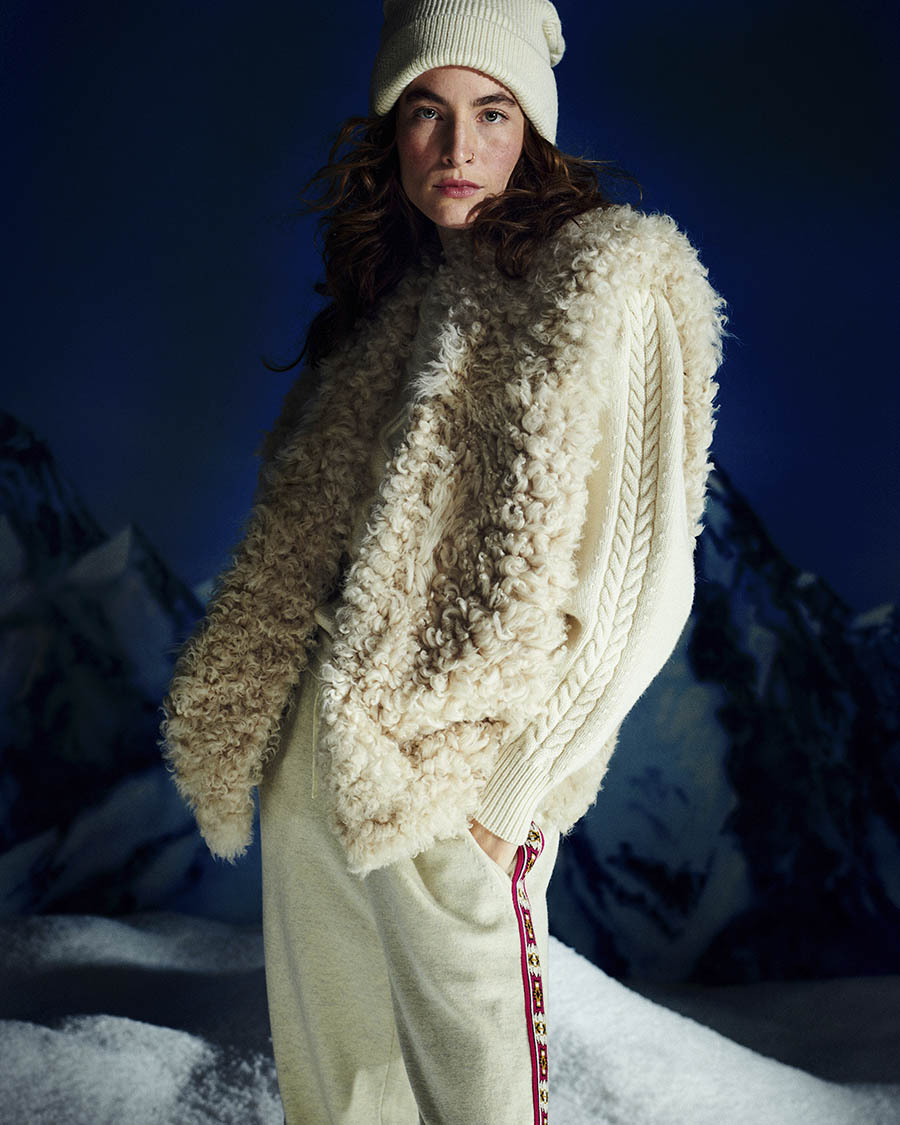


Text: Yves Tsou
School Night - Interview with Rand Faris by Dash Kolos
School Night
Interview with Dash Kolos & Rand Faris


On one scorching afternoon in late September, I caught Rand Faris, a talented young actress, who was born in the Kingdom of Jordan, then followed her heart and passion all the way to New York. We walked the streets of one of my favorite Brooklyn neighborhoods, shared stories, immigrant dreams, ideas and talked about our fears.


Dash Kolos: I know you just finished filming an important film, about a breakthrough New York Times story that helped launch the #MeToo movement. You got to work with a stellar cast and an amazing director Maria Schrader. How did it feel to be a part of such a strong female-led, female-written, female-directed project?
Rand Faris: It feels good to be a part of important stories, no matter how small or big the role is. Being an actor taught me to take in and appreciate every artistic experience. There is always a lesson to learn and experience to gain. I say this also as a reminder to myself, because as easy as it may sound, I find that challenging to live by.
Working with Maria Schrader and helping her realize a vision that is bigger than any of us was a great honor. This is a very important story told on behalf of so many women across the globe, so it is essential that is being brought to light – written and directed – by women. It was my privilege to be a tool in this storytelling process, amongst the female artists who are incredibly passionate about what they do.
You’ve been in the film game for quite some time yourself, what is the most apparent change you’ve observed in the industry and in yourself?
Dash Kolos: Well, in my opinion art is a reflection of us and the society. I think the most important change, that I see is happening right now, is the shift in storytelling. Who is telling the story is becoming as important as the story itself. This pivot in perspectives creates endless opportunities for artists and audiences as well. This is a recipe for fearless, honest and necessary filmmaking. As for my own personal change, I’d say, I’m shedding the desire to be liked and falling more and more in love with a very important set of words: “Fuck It/Off/That”.



Dash Kolos: Speaking of shifts, do you often get typecast? Moreover, do you think being something other than an American limits the possibilities of what people might see you as, or you find the opposite is true?
Rand Faris: Being an Arab woman in America can be limiting at times, but this also gives me many opportunities, like the film I just did. About half of the parts I get are the “Arab” roles. But, more often than not, with the stereotypical, “western” perception of what it is to be an “Arab”. What this creates is an unhealthy, unrealistic and unauthentic box. Therefore, we need more writers from the Middle East and more diversity in the writing room to break stereotypes across all ethnicities, races, gender, age – you name it! Just like you said – who is telling the story is crucial.
What about you? You originally from Russia, what are the perks and crutches of your ethnicity in the acting industry in America?
Dash Kolos: Look, I am happy to take on any role that comes my way. I genuinely love acting. But boxes have been around. They have been shifting shape and, I think, we are in the moment in the filmmaking history where they are starting to give way altogether. I do not yet see “Russian” characters in film or on TV that represent me, but then, I try not to live in a box and don’t allow anyone to place me in one. I believe we are all so freaking complex, but we do, unfortunately, see the world through the prism of stereotypes. And the media, film and TV played a part in it. The sooner we admit it, the sooner we can move forward and hopefully address this issue.
That was actually one of my fears – falling into one of those stereotypes and not living out my true potential.
What about you? What is your biggest fear as an artist? If you have any, of course.
Rand Faris: Oh I have a few, but I’ll save the other ones for a rainy day. Today we’ll mention the infamous FOMO. The fear of missing out…on the dreams that I’ve worked hard for and hoped for daily. It’s a possibility, it’s a 50/50 chance. I realize that. You either ‘make’ it or you don’t. You might end up living a very different version of your dream vision, or you might end up on a completely new trajectory, with new hopes and new dreams altogether. But in the current version of my dream I have a successful acting career, I write and create my own projects too. It’s about finding myself, finding my voice and growing through the experiences. My passion is still a burning flame.


Rand Faris: Speaking of finding your voice, what is the most recent lesson you’ve learned or realization you’ve had as a multidisciplinary artist?
Dash Kolos: Good question! With everything I have on my artistic plate, I am learning to trust myself more and more. Getting rid of doubts have been a significant challenge. Not allowing any discouragement into my world as well. It feels like I am putting together this enormous puzzle, but when the pieces fit, they fit perfectly. My photography helps my writing. My writing motivates my acting. My acting informs my directing. My directing fuels my photography. You get my little artistic circle.
How about you? What would be the lessons you’d share and advice you’d give to a teenage artist who is about to follow their heart?
Rand Faris: It’s all definitely about the journey, not the destination. The older you get, time will magically start to fly faster, so enjoy your ride and make stops at different points along the way. Some might be pleasant, some might be educational. Work hard of course, because the effort you put in plays an essential role – no hard work goes unnoticed. Celebrate every milestone, appreciate every sunset you get to catch, notice things that move you, embrace every experience – good and not so good. These things essentially fill your heart with life, and a full heart is the most important ingredient in success. A full heart will guide you in the direction that is right for you. Oh and PATIENCE! HAVE PATIENCE CHILD, or else this journey will be strenuous and you might overlook your accomplishments. And last but not least, it’s okay to have doubt, fall into funks, or wake up in your mid-20’s wondering about who you are and why you’re doing what you’re doing. Nothing is set in stone, and nothing should be. If you have a change of heart, don’t be afraid to follow it.
Oh and learn how to take your own advice, I’m still trying.




Talent: Rand Faris (@farisrand)
//
Photography & Interview: Dash Kolos (@dashdizzles) dashkolos.com
Text Revision: Paul Ulukpo
Film Developing and Scans: The Color House New York (@thecolorhousenyc)
The Art of Being Unapologetically Black - Muzi and his Kingdom of Music

It was a mild September’s afternoon. Milan had finally cooled down a bit from the blistering heat. Sat in a corner window seat, I ordered a cup of iced coffee, waiting for this impending interview with Muzi. I adore Muzi’s music. He is without a doubt a music wunderkind. At the age of 30, he is already one of the most venerated and talked about musicians in South Africa. He has recorded and produced 4 albums, played several DJ sets in Berlin, done some overseas tours and has even graced the soundtrack of the sought-after Spanish Netflix drama “Elite”. His fine mixture of traditional African music and contemporary electro-techno sounds is beyond avant-garde. Wanting to immerse myself more into his musical approach, I tuned into the tracks from his latest album “Interblaktik” while waiting. With his upbeat African rhythm and overwhelming techno beat, the ever-lasting sweltering summer in Milan seems not to be so unbearable.
Hi Muzi, how are you? Where are you right now?
Hi, I’m good. Thanks. Right now I am in Johannesberg, South Africa.
How’s the weather there in Johannesberg?
The weather here now is so beautiful. Yesterday was really humid and hot but today the weather is so nice. Clear sky, pleasant breeze…
Same here in Milan! I am glad that the weather is nice today on both our ends, and that we could have a delightful conversation in this pleasant weather. I would like to start it with your very iconic stage name “Muzi”. It is actually an abbreviation of your full name, right? What’s the meaning of it, and is there any interesting story behind?
Muzi is short for Muziwahke; the literal meaning of it in my mother tongue Zulu is “Your home” or “Your house”. However, there’s a deeper meaning behind it, which is the person who builds his/her own house or kingdom. So if you look at my career, I actually live up to my own name – I build my own kingdom of music. Also, Muzi sounds like music. It’s not only an abbreviation of my name, but also a symbol of my passion and my career.
That’so cool! I think it perfectly explains the reason why we are here today – to talk about your music kingdom. Earlier this month, your new album “Interblaktic” had proudly joined your kingdom of music. What do you want to bring to the audience this time?
I guess my whole mission is to do modern African music, and take it onto the world stage. As you can see from the name “Interblaktic”, I have this vision to pretty much concoct a sort of world + African music that is made in South Africa.
Interesting! What are the African elements that can be found in your music? Do you only extract elements from traditional South African music or also from other types of African music?
Primarily, the elements were extracted from South African music, but the more I travel, the more I get to experience other types of African music. Even in South Africa, we have many different ethnic tribes. I am Zulu, and traditional Zulu music is a part of my identity. I grew up in a household that was imbued with dance music, so I started to mix it into traditional Zulu music. The more I grow, the broader my horizon is. I started to meet people from other tribes, whom I learned about their music from. I then took their musical elements and flipped it into other genres that I like, such as dance music, Chicago house or Detroit techno. I feel like I am connecting the dots between different tribes, with an electronic alternative sense.
What are the characteristics of traditional music from other South African tribes, other than Zulu, that we can find in your music?
In traditional Zulu music, you can hear heavy drums beating, a little bit like the taiko in Japanese traditional music. Xhosa people are good vocalists; they specialize in very deep vocal. Traditional Tsonga music involves a lot of instruments such as castanets, claps and shakers that resemble Mexican/Spanish music. I also take some Fela Kuti’s Afrobeat elements and mix them with my music. I want to break the boundaries between different tribes and cultures through the power of music.
Aside from traditional African music and the electro-dance music that you fancy, what are the other influences in your music-making?
I watched Disney’s animation “Aladdin” many times when I was a kid. I am fascinated with the traditional Arabian music; therefore I added a hint of Arabic music into my music. You can hear it in my track “Tjuu Wena” from my latest album “Interblaktik”. Also, culturally, hip-hop has a huge impact on me. I love a lot of Hip-hop music, also R&B, alternative rock and even pop music.


Are there any other types of musical elements you’ve never used before that really intrigue you or perhaps that you’d want to incorporate in your future music?
If you listen to all my music, you’ll find out that actually I like leaving clues for the following project. This time the hint I left is that I would love to create a Disco album in 2021 that sounds like those in the 60s and the 70s.
That sounds promising! Can we expect it to be released anytime soon?
Probably another 5 years or so (laugh)
(Laugh) But it seems like you are quite prolific! You’ve released 4 albums since 2016. One thing that I am quite curious to know is about the track “Boom Shaka” from the eponymous debut album released in 2016. It was featured in the popular Netflix TV series “Elite”. What was your thought when the team of “Elite” reached out to you?
I am always grateful when I have opportunities like that. The thing that makes “Boom Shaka” unique to me is that it’s a creation of how I felt; and I had loads of feelings at that time. That was when I was living in Berlin; I guess I was angry and frustrated with a lot of things, and the rebellious attitude is completely projected in the album. I think it was an odyssey of finding myself, and that’s why it is special for me. After that, I came back home to continue pursuing my music career. Indeed, it is a project that I am super proud of, especially with the grace of “Elite”.
After “Boom Shaka” you released the album “Afrovision”. It is a very interesting title, but what’s the perspective of Afrovision? What kind of vision do you wish to convey through this album?
It was more like my vision where African music can go. Sometimes it feels like the rest of the world sees Africa in a very one-dimensional way. They consider Africa or African as a collective term. But there are so many countries, so many different cultures and different flavors of music on this continent. I would just add my vision of Africa into my music. So for those who take Africa as one-dimensional, I want them to realize that Africa is actually way more diverse than how they thought, and there is actually so much going on here that they don’t know about.
And as for this latest album of you, “Interblaktic”, is there any story behind the production and the concept of this album that you would like to share?
Production-wise, I learn new things sonically by mixing traditional music from different tribes with contemporarily electronic music. Conceptually, it’s an album talking about how my ego dies. So when you listen from track #1 all the way to track #16, you will discover the changes in my mindset. Track #1 “Interblaktic” shows a very confident, “I don’t give a damn” attitude. As the album unfolds, you will listen to a story of me trying to get a girl I like (Track #13, Tsi) and how she broke my heart but I still love her (track #14, Fool’s Love). And in the end, it left with the truth that, regardless of what has happened, I still love music.
And what visions do you have in this album?
I guess the vision is similar to all of my past albums. So if you look at my latest three albums – “Afrovision”, “Zeno” and “Interblaktic”, they form this triangle. All the tracks are almost like cousins, and “Interblaktic” is the brightest version amongst them.


Oh! So “Interblaktic” is actually the brightest of them all?
In terms of albums, Yes! So “Afrovision” is a man starts to realize who he is. “Zeno” is the sweet burden of taking care of a kid, and the mindset of me and my kid versus the whole world. And in “Interblaktic”, I realized that actually I do care about people and stuff like that. Literally, it’s also like a process of how my ego dies.
Do you really have a kid?
Yes! In fact, Zeno is the name of my 3-years old daughter.
One thing that I find quite interesting is that, in the intro of the track “Interblaktic”, there’s a line “There seems to be a lot of black people on Mars”. What’s the message behind this that you would like to convey?
When I was writing “Interblaktic”, I started to feel like “You can’t just be black. You can’t be yourself”. So I started to imagine “What if we are in another planet but still under the same prejudice on earth?” The whole intro of “Interblaktic” says that there is “a problem” here; someone is complaining that there seems to be a lot of black people on Mars. Even when we go to the Mars, there will be people complaining about our existence. So the song is pretty much about being unapologetically black.
I guess self-identity is one of the most important things after all. Thank you so much for sharing such interesting insights with us. Before leaving, would you like to tell us about your future plan?
I think my future plan is obviously to go on a tour. I’ve done a US and Europe tour before, and it was quite successful. I would love to do it again. Also, I want to launch a clothing line.

